Inbox and Environment News: Issue 492
May 2 - 8, 2021: Issue 492
Holding Back The Tide
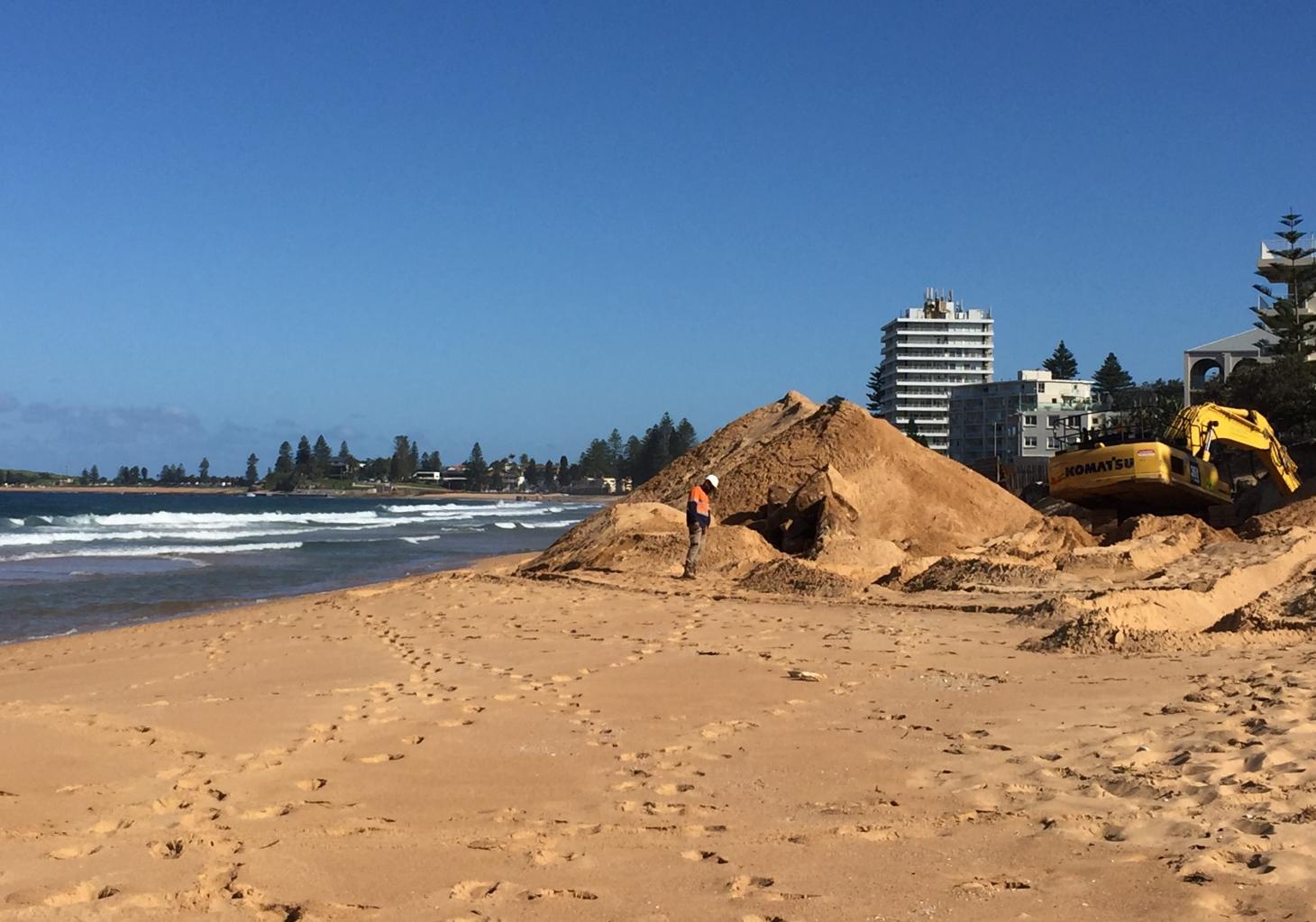
The Coast
Radio Northern Beaches
Friday 7 May at 11am
Work has begun on a sea wall to protect private properties at Collaroy-Narrabeen beach from erosion and storm damage but questions remain about whether sea walls are the best solution to this “wicked” problem.
The Collaroy-Narrabeen stretch of coast has long been subject to dangerous storm and tide erosion, with properties severely damaged in the 1920s, 1940s, 1970s and again in 2016.
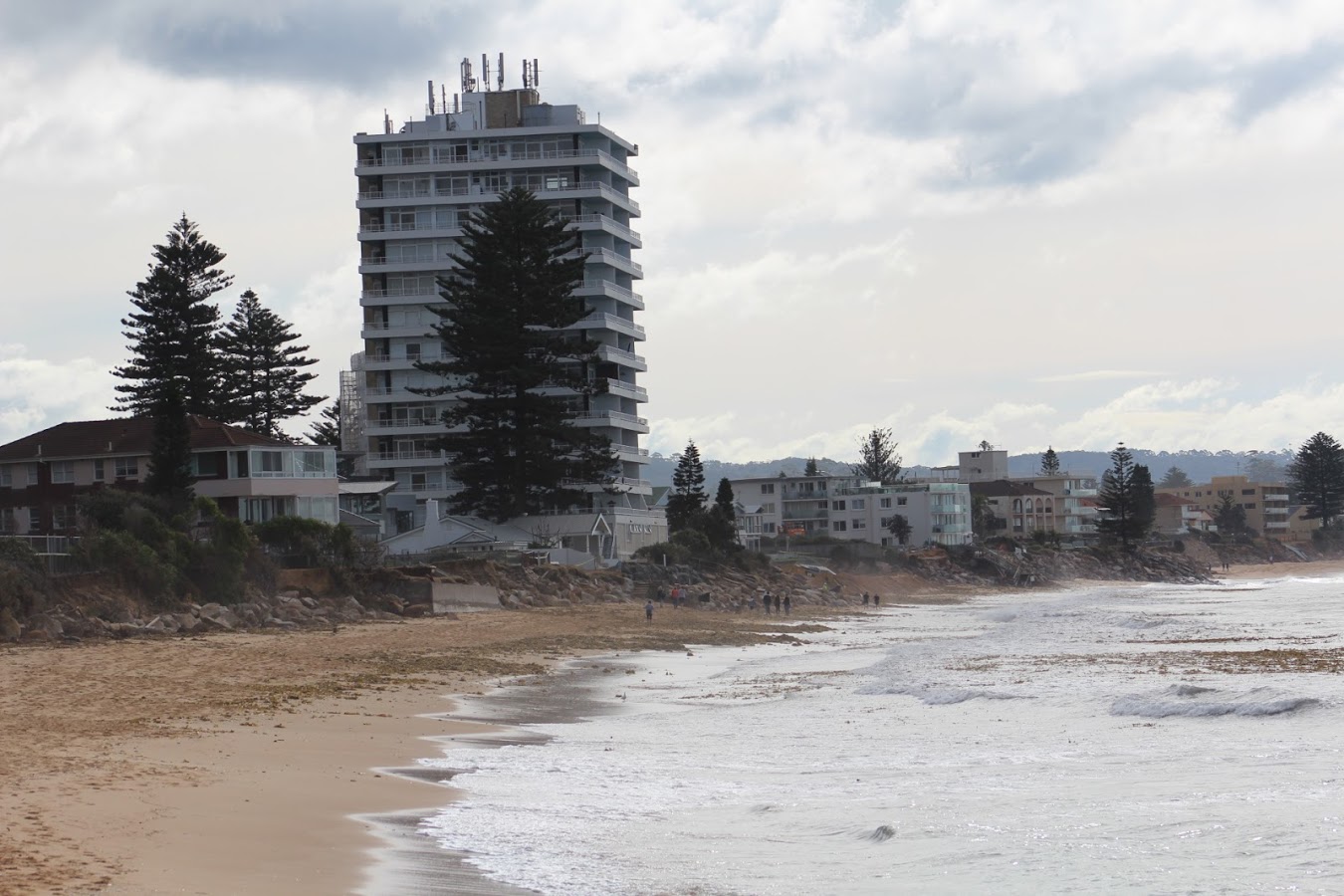
Collaroy beachfront after June 2016 storms - A J Guesdon photo
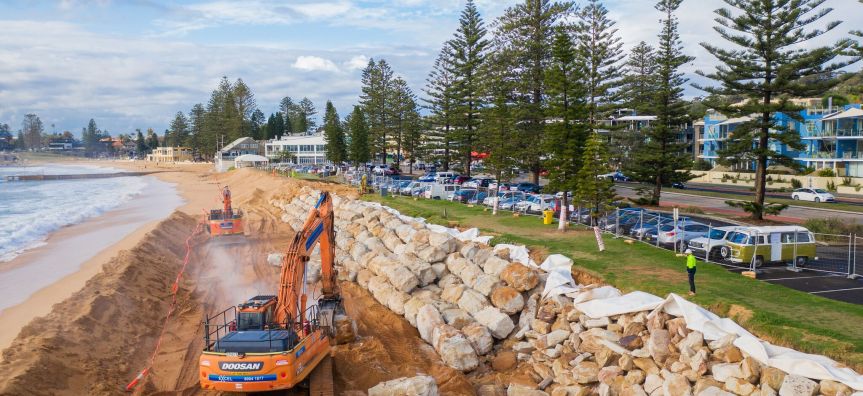
Public works to protect Collaroy carpark and Pittwater Road, completed in 2019. photo courtesy Northern Beaches Council
Sea walls have been planned in the past, but the current work is the biggest so far, with construction stretching 1.3 kilometres from Collaroy to South Narrabeen, and encompassing 49 private properties interspersed with 11 public land areas.
It is hoped the project will eventually also protect nearby Pittwater Road and its gas and communications lines.
The construction is being done in parts, with different groups of private property owners collectively paying for various sections of the wall.
Speaking to host of Radio Northern Beaches show The Coast, Wendy Frew, coastal engineer and former General Manager of Pittwater Council, Angus Gordon, says the work should be handled as a “singular, coordinated design and construct” project to get the best result both for property owners and for the beach itself.
However, that’s not possible under current legislation.
“The unfortunate thing is that the State Government has failed to change the Local Government Act to facilitate this occurring in a sensible manner,” Angus explains in an episode of The Coast that will be broadcast on Friday 7 May, at 11am.
Angus says it would be best if Council could build one long, continuous wall and, over time, recover the costs from those private property owners who would benefit from the wall.
“What’s happening now is that people are putting in development applications for individual walls to protect individual properties ... A group of individuals have got together and they are building a vertical wall for a specific length of the beach.”
“That is really not a good idea in the long-term for the overall benefit of the community. It will help to save the houses but at the cost of the beach from the community’s viewpoint. It is a sad comment on the fact that the [State] government has not really reacted, in my view, appropriately and provided Council with the authority to carry out a sensible solution.”
Asked about design issues related to a vertical wall, he says it “is perhaps the one that has the most severe potential for serious damage on the beach and it is also the one more prone to catastrophic failure … which is not a good idea if you accept there will be climate change over the life of the wall and you will have higher water levels and larger waves than the wall was designed for.”
Others are calling for beach nourishment rather than the construction of sea walls, where sand lost through longshore drift or erosion is replaced with sand from other sources.
Surfers and others are concerned about what a seawall could mean for the way waves break on the shore, for the public’s access to the beach, and for the appearance of the beach.
Surfrider Foundation Northern Beaches Branch has campaigned hard against the construction of a seawall along Collaroy-Narrabeen Beach as far back as 2002 when thousands of local surfers and residents lined the beach in protest.
Branch President, Brendan Donohoe, explains why Surfrider continues to campaign for sand nourishment and why any work should be primarily paid for by private property owners.
“Beaches don’t need seawalls; we need seawalls to protect property that lies behind them,” Brendan says.
“Seawalls don’t help a beach perform the way a beach should perform. The sand dunes behind a beach should be your buffer.”
This episode of The Coast also hears from cultural historian Caroline Ford, whose book Sydney’s Beaches, A History, tells the story of how Sydney’s world-famous beach culture only exists because the first beachgoers demanded important rights.
Her research uncovered a complicated history that saw Sydney’s beaches move from public to private ownership and back again over the decades. In the case of Collaroy, failure by government to buy back all of the land close to the beach meant private landowners continued to build very close to the shore, even after some properties were severely damaged by storms.
To hear more about the seawall at Collaroy-Narrabeen and how we got to this point, tune in to The Coast on Radio Northern Beaches (88.7/90.3FM) on Friday 7 May at 11am. Or you can listen anytime at: https://www.mixcloud.com/TheCoastRNB/
Update: Collaroy Seawall Protection
Friday, 26 February 2021 - By Northern Beaches Council
If you’ve been down near Collaroy or Narrabeen beach lately you may have seen the seawall construction works happening along the beachfront. This work is being undertaken by residents to protect their homes in the event of a storm as devastating as the 2016 east coast low that wrought such havoc on this part of the coastline.
They are part of the 1.3km seawall proposed from South Narrabeen to Collaroy to protect both private and public assets. There are 11 parcels of public land (including the Collaroy carpark, South Narrabeen Surf Club, reserves and road ends) interspersed between 49 private parcels of land that require protection.
The works to protect private homes is being 80% funded by private owners, with Council and the NSW Government contributing 10% each. As private properties are the substantial beneficiaries of the protection, it is reasonable that they bear the majority of the expense for protecting their land.
It has not been an easy process for residents to get to this point and Council has worked to support them navigate the complex legal, planning and financial issues that have arisen. It’s great to see that the first of these private works to protect 10 vulnerable properties is finally underway.
We are continuing to work with other residents along the strip so they too can begin the works to protect their properties and 29 of the 49 private properties have already had DAs approved and there are currently no DAs with Council awaiting determination.
Other protection works on public land at Collaroy carpark have been completed by Council, jointed funded with the NSW government, and works at the remaining public sites will be undertaken in a coordinated way with adjoining private works.
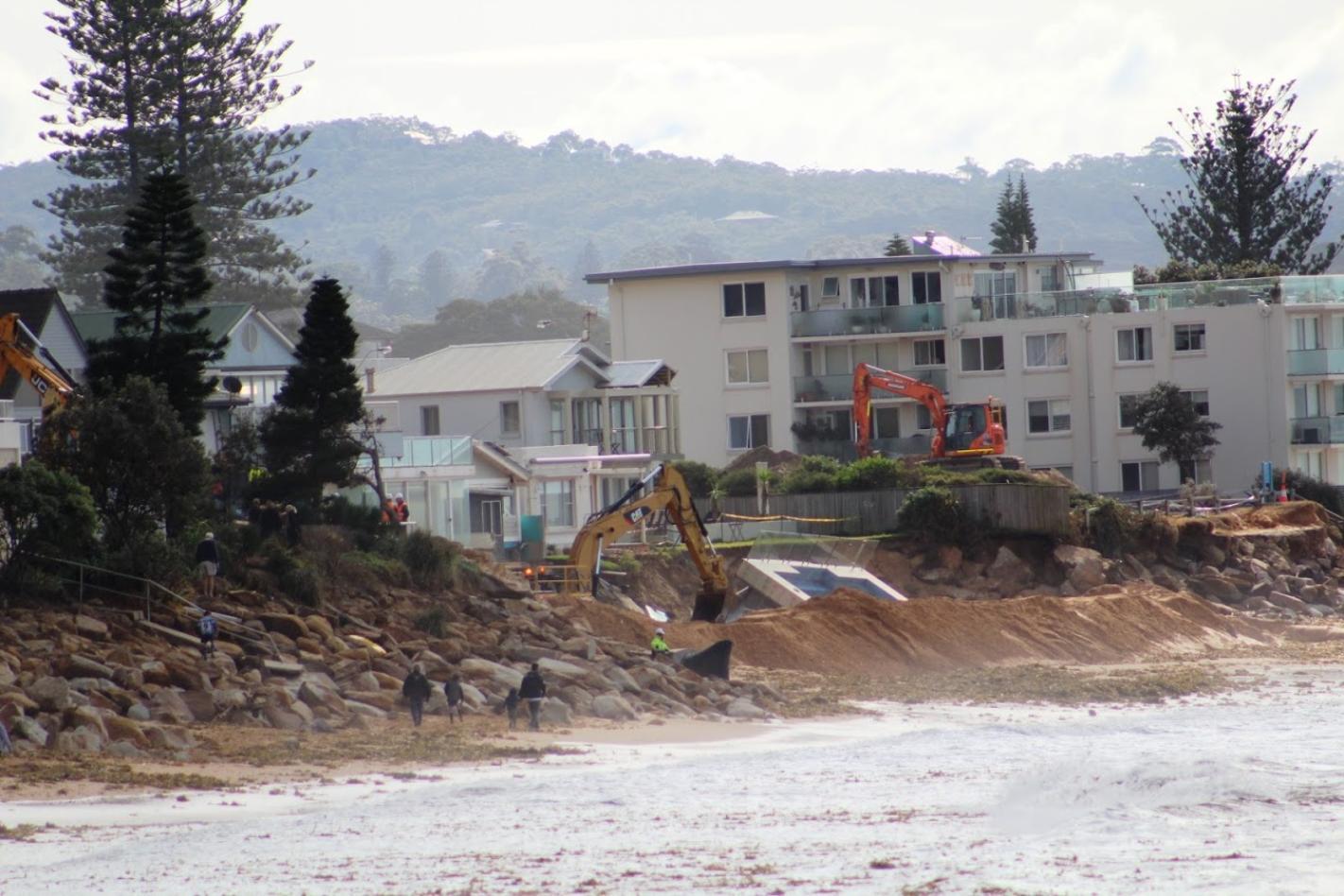
Collaroy beachfront after June 2016 storms - A J Guesdon photo
Also available:
World’s Sandy Beaches Under Threat From Climate Change, March 2020, Issue 441
Narrabeen Lagoon And Collaroy Beachfront: Storms And Flood Tides Of The Past, June 2016, Issue 267
June 2016 Storm 1000's of Hands, 1000's of Community Kindnesses: One Objective, June 2016, Issue 267
International Permaculture Day 2021 At Elanora Heights
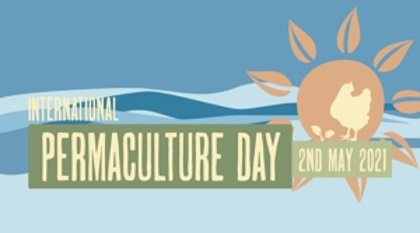 Permaculture Northern Beaches presents: International Permaculture Day - Garden Tours: Sunday May 2nd, 2021
Permaculture Northern Beaches presents: International Permaculture Day - Garden Tours: Sunday May 2nd, 2021Council Calls For Removal Of Shark Nets On The Northern Beaches
Migrating Shearwaters Coming Ashore On Our Beaches
- the flesh-footed shearwater returns from the seas off Japan and Siberia to the same nesting burrows on Lord Howe Island - this species is listed as vulnerable in NSW
- the sooty shearwater returns from the North Pacific Ocean and Southern Ocean to breed in small numbers on islands south of Port Stephens
- wedge-tailed shearwaters return from the North Pacific to their burrows on islands off the coast of NSW
- short-tailed shearwaters breed on islands along the eastern and southern coastlines of Australia, from the central coast of NSW to Western Australia. [1.]
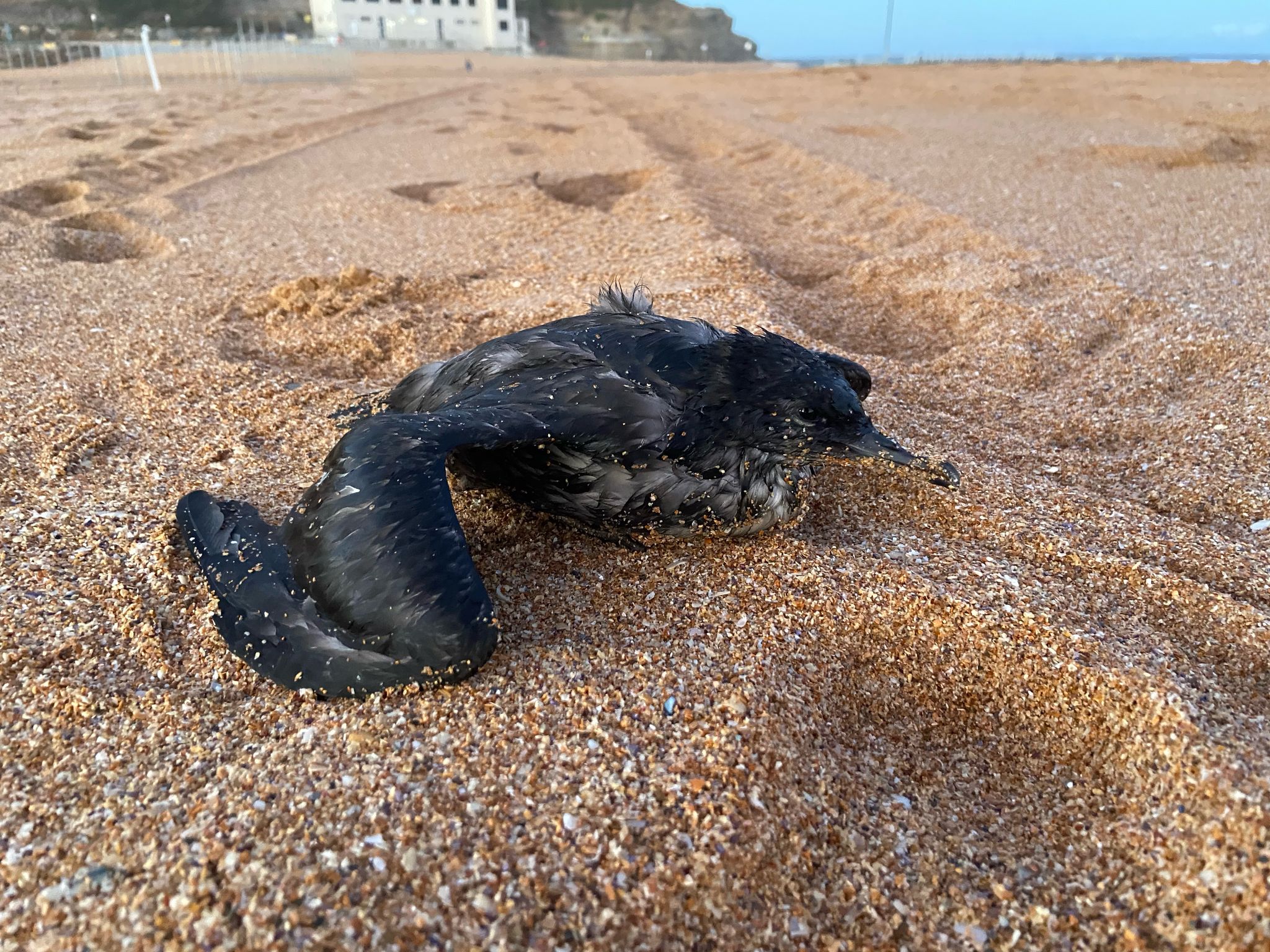
EPA Seeking Feedback On Methods For Sampling Air, Water And Noise
- Approved Methods for Sampling and Analysis of Water Pollutants in NSW
- Approved Methods for Sampling and Analysis of Air Pollutants in NSW
- Approved Methods for Measurement and Analysis of Environmental Noise in NSW
Kimbriki’s New FREE Monthly Community Drop-In Day To Meet Our Ecologists!
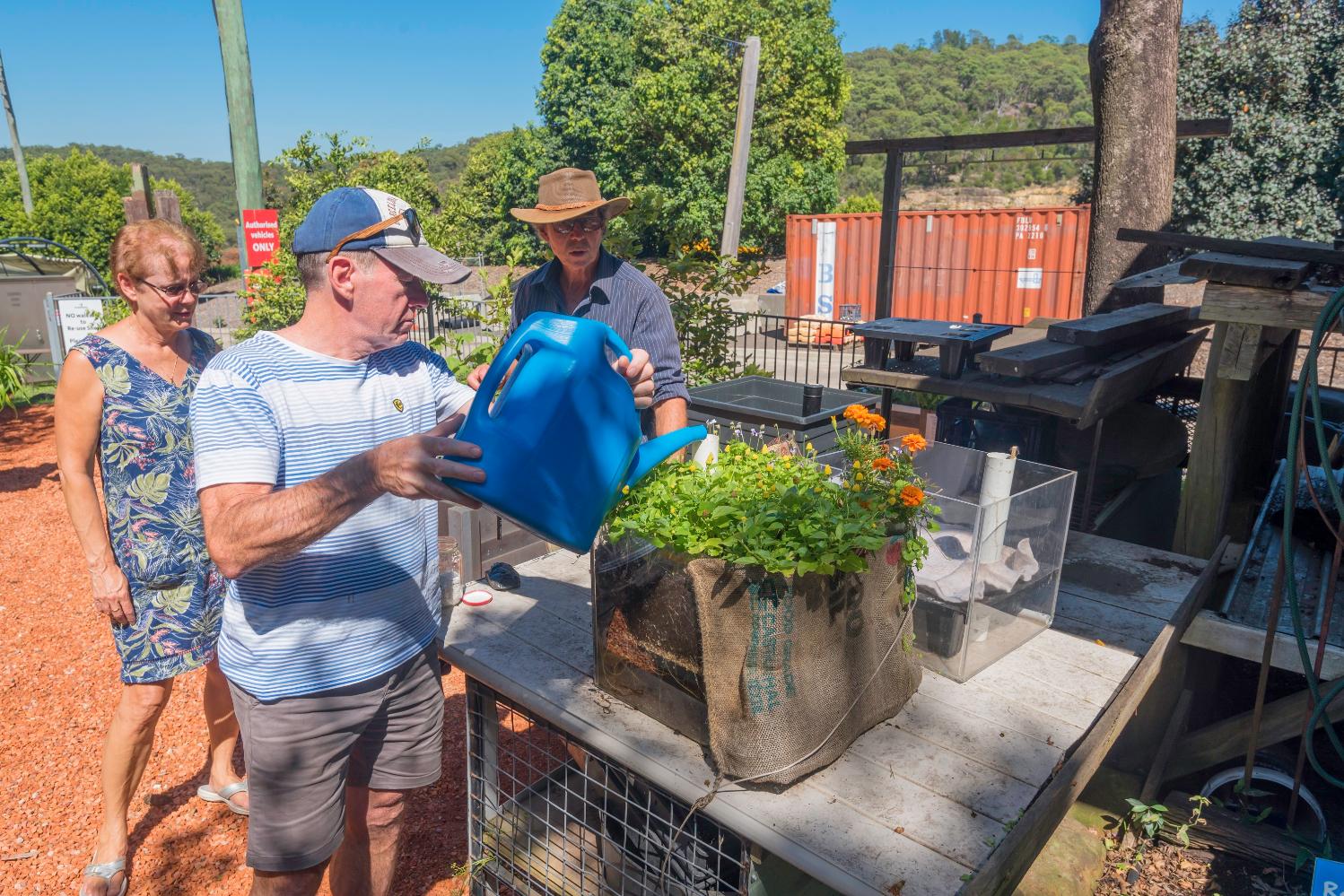
Kimbriki has launched a new “Meet the Ecologist” event which encourages community members to drop into the Eco House and Garden between 9.30am and 2.00pm on the last Friday of each month.
Visitors can wander through the permaculture garden and take the opportunity to learn more about ecology, permaculture, and sustainable living practices.
While the Eco Garden is open seven days a week for Kimbriki visitors, it is not always staffed, and when staff are in the garden, they are often running Kimbriki’s school’s education program and community workshops. This new initiative allows any community member to drop by and meet the Ecology team and experience, learn, and be inspired by the Eco House & Garden’s wide range of edible plants, wicking garden beds, native beehives, worms’ farms, and composting toilets!
Peter Rutherford, Kimbriki’s Senior Ecologist said “This new drop-in time offers our Ecology staff a great opportunity to meet the community and help solve problems with composting, worm farming, or organic gardening and to highlight the features of the garden”.
“Best of all, it’s free and you don’t need to book. Simply drop by the Eco House and Garden between 9.30am and 2.00pm on the last Friday of the month, and either myself or a member of my team will be there to help you with all things ecological! “
The Eco Garden was opened by Mary Moody, Compere of ABC Gardening Australia in March 1999, and Dick Smith opened the Eco House in 2011. The Eco Garden is a permaculture or “grazing garden”, where you can nibble edible flowers, fruits, and herbs as you wander.
You can also walk through our Eco Shop which offers a selection of plants for sale that have been grown in the Eco Garden, along with wicking beds and gardening supplies.
For those community members who would like to join us for our next Meet the Ecologist session on Friday 30 April between 9.30am to 2.00pm, don’t forget to bring your own mug to enjoy a pot of our freshly brewed Kimbriki herbal tea!
This is a free event that is open to all members of the community and bookings are not necessary. Just drop by and say hi – everyone is welcome!
Meet the Ecologist 2021 Event Dates:
- Friday 30 April
- Friday 29 May
- Friday 25 June
- Friday 30 July
- Friday 27 August
- Friday 24 September
- Friday 29 October
- Friday 26 November
- December – No event
Kimbriki’s Eco House and Garden is a unique education centre dedicated to exploring how to live in a more sustainable way – a place for you to experience, learn and be inspired.
Set within the Kimbriki Resource Recovery Centre, this education centre was built in 1999 and comprises an organic garden and Eco House constructed primarily from materials recovered from the Kimbriki site, otherwise destined for Kimbriki’s landfill.
Approximately 4,000 visitors come through the Eco House & Garden every year to attend an educational workshop, to participate in a community group visit or school excursion, or to wander through the garden at their own pace.
The Eco House & Garden is very popular for group visits and school excursions and we encourage you to book well in advance for these visits.
To support local schools in the Shareholder areas of Northern Beaches Council and Mosman Council, school excursions are provided for free. Students participate in an ecology workshop designed to support primary, secondary school and tertiary curriculum outcomes and tour Kimbriki’s waste and recycling facilities. For schools and groups outside the Shareholder area, a small charge is applicable.
We offer a range of educational workshops at the Eco House & Garden where you can learn successful organic gardening techniques and how to implement sustainable living ideas into your everyday life. Workshops are hands-on and focus on topics including self-watering garden beds, native bees, composting & worm farms, starting an organic vegetable garden, and pruning and propagation.
To view the Workshop Calendar, click here
Our workshop trainer, Senior Ecologist, Peter Rutherford has over 20 years experience in teaching – enabling adults and children to make their lives more sustainable.
Our online booking system is simple, select the workshop you wish to attend and follow the link to book.
The Eco Shop at the Eco House & Garden stocks a range of products to get you started with composting and worm farming as well as Wicking Beds. Products can be purchased at the Eco House by appointment or following workshops. Our Eco Shop page on this website outlines all the products we stock for sale.
The Eco House Nursery offers a selection of plants for sale – plants that have been grown in the Eco Garden.
Water Use at Kimbriki’s Eco House & Garden
We use rain water tanks to supply water to the Eco Garden and nursery.
Our drip irrigation and micro spray watering system is fitted with an automated weather adjustment rain sensor which shuts down the system when it has rained or is raining. Current Sydney water restrictions allow for the use of automatic watering systems, as long as a rain sensor is fitted to the water controller, for a maximum of 15 mins a day before 10 am and after 4 pm.
Hand watering is done before 10am or after 4pm.
The use of town water for dust suppression is exempt from level 2 water restrictions. At Kimbriki our water trucks use recycled water for the majority of our dust suppression on site.
The Eco Garden
The garden is open Monday – Sunday, 7.00am – 4.30pm (closed Christmas Day and Good Friday). It contains a wide range of native food plants, signage and interpretive information as well as waterless composting toilets you are welcome to wander through any time.
Find out more at: kimbriki.com.au
North Head National Park Uprgrade: Give Your Feedback
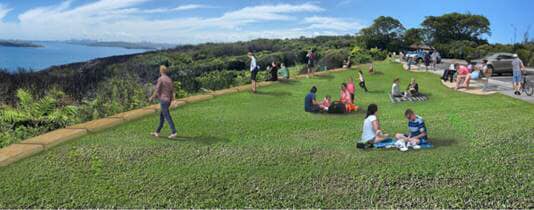 The National Parks and Wildlife Service is pleased to release the concept plans for the North Head Scenic Area upgrade.
The National Parks and Wildlife Service is pleased to release the concept plans for the North Head Scenic Area upgrade.- - reconfiguring the car parks to provide more accessible parking spaces and overflow parking.
- · extended landscaped space for visitors to enjoy views across the harbour.
- · installation of pedestrian crossings and a pedestrian path to improve safety, access and circulation.
- · installation of a new bus stop to the east of the Bella Vista Café.
- · improvements to the entry of the Fairfax Walking Track (currently closed).
Friends Of Narrabeen Lagoon Catchment: Next Forum + May Activities
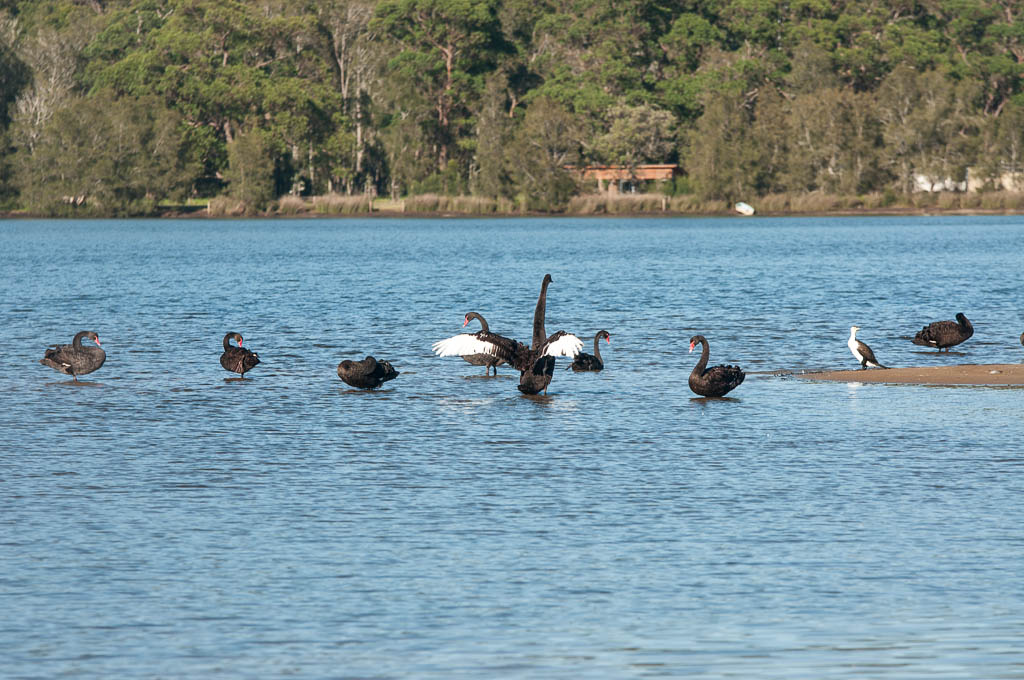
Avalon Community Garden
Avalon Community Garden’s primary purpose is to foster, encourage and facilitate community gardening in Pittwater on a not-for-profit basis.
The garden was started in 2010 by a group of locals who worked in conjunction with the support of Barrenjoey High School to develop a space that could be used by the local community, to grow
vegetables, herbs, plants and flowers, and practice sustainable gardening techniques to benefit its members and the community overall.
The garden has been very successful and has grown and developed since its inception, in terms of its footprint, infrastructure, variety of produce and diversity of members. The garden welcomes new members all year round. Levels of contribution range from multiple times a week, to once a month. Your contribution is always welcome, and it is acknowledged people will have varying levels of commitment.
We encourage you to join and start enjoying the following benefits associated with community gardening:
They provide benefits for individuals and for the community as a whole. Community gardens provide education on gardening, recycling and sustainable use of natural resources.
They develop community connections and provide a means of engaging youth, children, the elderly and the disabled and otherwise marginalised individuals in mutually enjoyable and rewarding activities, thus helping to develop more functional and resilient communities.
People involved in community gardens say they improve wellbeing by increasing physical activity and reducing stress, providing opportunities to interact meaningfully with new friends, give time for relaxation and reflection as well as an opportunity to improve their interconnectedness with nature.
To get involved take a look around the site, join the Facebook group and come along and visit on a Sunday morning between 10 and 12 at the garden within Barrenjoey High School on Tasman Road, North Avalon.
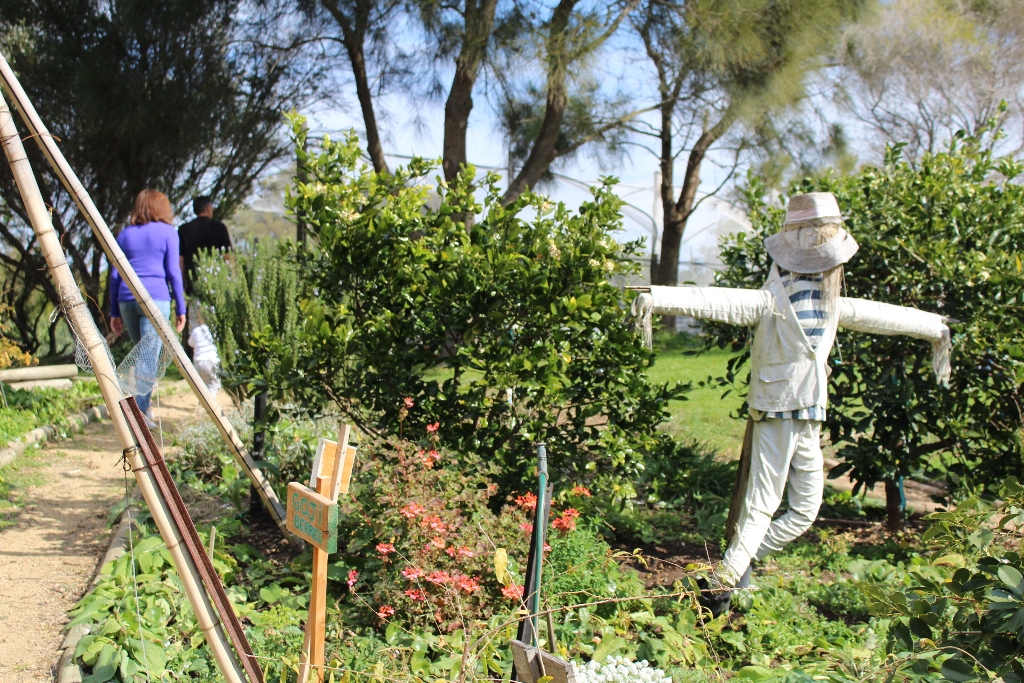
Bushfire Conference June 2021
BirdLife Australia Autumn Survey Time
- Breeding behaviours - If you see a bird carrying nesting materials, sitting on a nest or feeding chicks, let us know. Select the option under 'Breeding Activity' that best matches your observation (remember to keep your distance though from birds who are breeding. We don't want to disturb any nests. Be sure to limit your observations and don't get close enough to scare a bird off it's nest.)
- Aggressive interactions – Let us know if you have observed any species initiate interactions with other birds and whether this interaction could be classed as aggressive – you can do this in the sighting details tab using the specific species interactions option.
- Have you seen any birds feeding on the native plants in your garden? If so – who was dining on what? – you can tell us in the notes section when you record the species you have observed under “sighting details”
- Have any birds been dabbling in some Oscar-worthy acting? – tell us about the weird and wonderful things your backyard birds have been up to you using the notes section in the sighting details tabs.
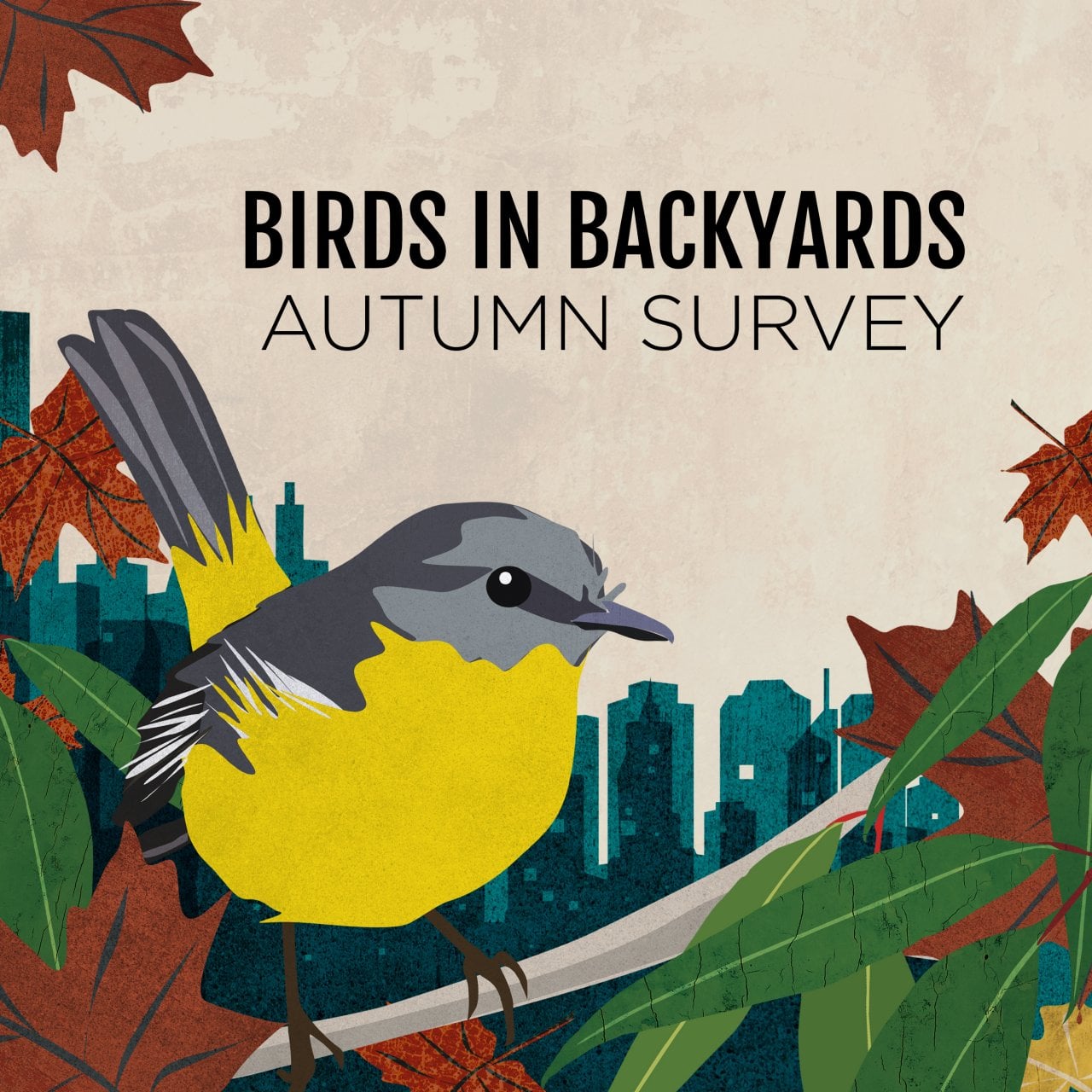
Biodiversity Offsetting In NSW Drives Habitat Loss And Super Profits For A Lucky Few NSW Conservation Council States
Far West Gas Fields - Where Is The Water Coming From NSW Nature Conservation Council Asks?
Defending The Unburnt: EDO Launches Landmark Legal Initiative
- 14 million hectares burned. Nearly 3 billion native animals impacted. Entire communities all but destroyed.
- We have a plan to defend what remains.
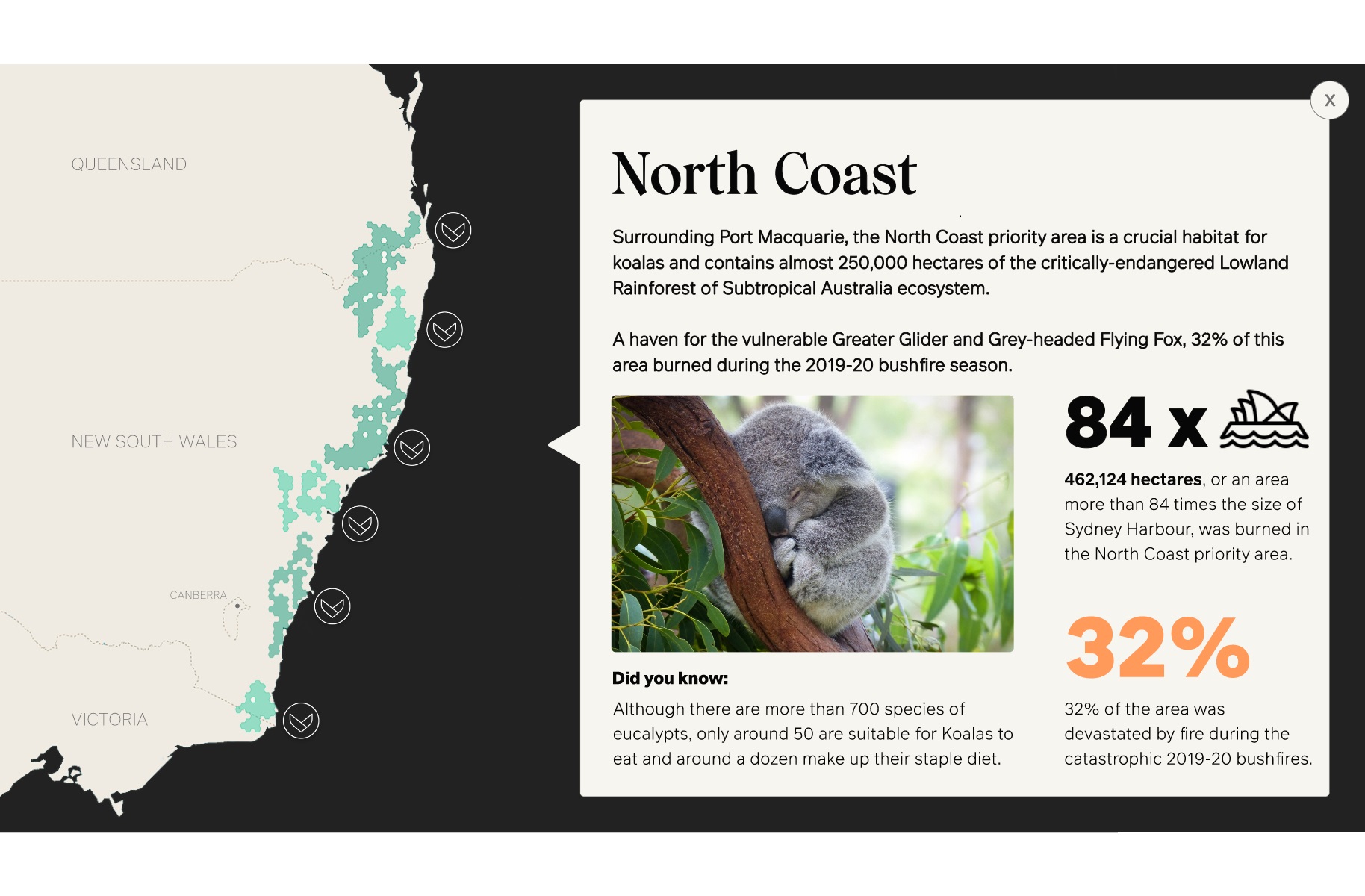
Tahmoor Coal Mine Extension Approved By NSW IPC
Defending World Heritage Springbrook National Park From Water Mining
Night Noise Limit Breach Results In $15,000 Fine For Hunter Valley Coal Mine
$300,000 Upgrade For Piles Creek Loop
Stronger Protection For Sydney's Drinking Water Pipelines
Hanson Tweed Sand Plant Expansion: Feedback
- a maximum of 950, 000 tonnes of sand extracted annually
- operate 24hours/7 days a week
- quarry life - 30 years
Bushcare In Pittwater
Where we work Which day What time
Avalon
Angophora Reserve 3rd Sunday 8:30 - 11:30am
Avalon Dunes 1st Sunday 8:30 - 11:30am
Avalon Golf Course 2nd Wednesday 3 - 5:30pm
Careel Creek 4th Saturday 8:30 - 11:30am
Toongari Reserve 3rd Saturday 9 - 12noon (8 - 11am in summer)
Bangalley Headland 2nd Sunday 9 to 12noon
Bayview
Winnererremy Bay 4th Sunday 9 to 12noon
Bilgola
North Bilgola Beach 3rd Monday 9 - 12noon
Algona Reserve 1st Saturday 9 - 12noon
Plateau Park 1st Friday 8:30 - 11:30am
Church Point
Browns Bay Reserve 1st Tuesday 9 - 12noon
McCarrs Creek Reserve Contact Bushcare Officer To be confirmed
Clareville
Old Wharf Reserve 3rd Saturday 8 - 11am
Elanora
Kundibah Reserve 4th Sunday 8:30 - 11:30am
 Mona Vale
Mona Vale Mona Vale Beach Basin 1st Saturday 8 - 11am
Mona Vale Dunes 2nd Saturday +3rd Thursday 8:30 - 11:30am
Newport
Bungan Beach 4th Sunday 9 - 12noon
Crescent Reserve 3rd Sunday 9 - 12noon
North Newport Beach 4th Saturday 8:30 - 11:30am
Porter Reserve 2nd Saturday 8 - 11am
North Narrabeen
Irrawong Reserve 2nd Saturday 2 - 5pm
Palm Beach
North Palm Beach Dunes 3rd Saturday 9 - 12noon
Scotland Island
Catherine Park 2nd Sunday 10 - 12:30pm
Elizabeth Park 1st Saturday 9 - 12noon
Pathilda Reserve 3rd Saturday 9 - 12noon
Warriewood
Warriewood Wetlands 1st Sunday 8:30 - 11:30am
Whale Beach
Norma Park 1st Friday 9 - 12noon
Western Foreshores
Coopers Point, Elvina Bay 2nd Sunday 10 - 1pm
Rocky Point, Elvina Bay 1st Monday 9 - 12noon
Gardens And Environment Groups And Organisations In Pittwater
Avalon Golf Course Bushcare Needs You
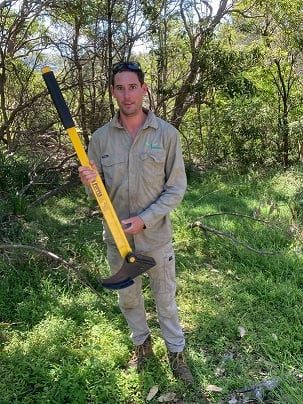
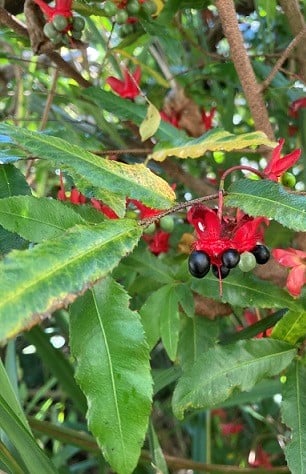
Pittwater Reserves

This $1 billion energy deal promises to cut emissions and secure jobs. So why on earth is gas included?
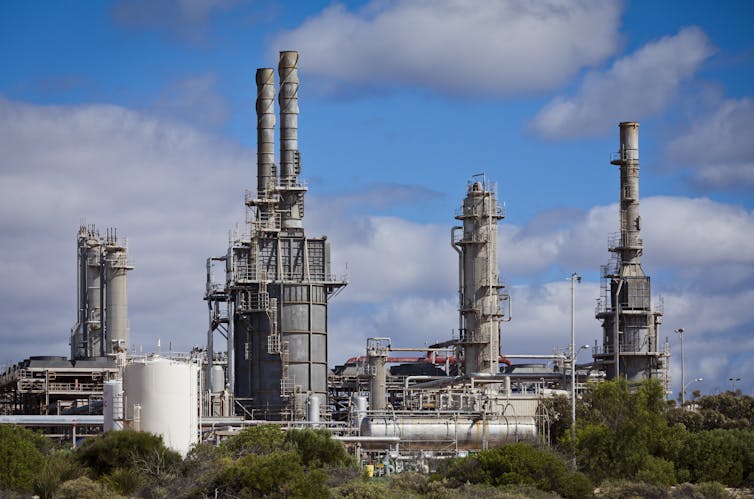
In case you missed it, a major A$1 billion energy deal between the Morrison and the South Australian government was revealed recently.
The bilateral deal represents a key driver for the national economic recovery from COVID. It promises to provide jobs in the energy sector and contribute to South Australia achieving net 100% renewables by 2030.
But there’s a big caveat: the agreement involves a joint commitment to accelerate new gas supplies into the east coast market.
With so much money on the table and other nations recently doubling down on climate commitments, let’s look at the good and bad bits of this landmark deal in more detail.
A Gas-Led Economic Recovery
The agreement was announced ahead of US President Joe Biden’s climate summit last week, which saw Australia spruik technology growth to cut emissions instead of committing to new climate targets.
In total, the federal government will contribute A$660 million and the South Australian government A$422 million towards the new deal.
Both governments have also agreed to a gas target of an additional 50 petajoules of energy per year by the end of 2023, and 80 petajoules by 2030. Their rationale is the need to improve energy security and reliability.
This focus on gas in the agreement stems from the federal government’s much-criticised, gas-led economic recovery plan, which argues new gas supplies are vital for future energy security.
Read more: Australia is at a crossroads in the global hydrogen race – and one path looks risky
In February, the Australian Competition and Consumer Commission outlined a potential shortfall of 30 petajoules of gas for the east-coast market leading up to 2024. This shortfall could impact energy supply, and the federal government has used this to help justify opening new gas reserves.
However, nothing is certain — COVID has reduced global demand for gas so any shortfall will likely be deferred. Meanwhile, renewable technology and hydrogen production and use are rapidly advancing.
Bad: Investing In Gas
With the seismic shift in the economics of renewables over the past decade, investing in new gas supply is unnecessary and retrograde. In fact, it’s now more expensive to transition from coal to gas than from coal to renewables.
Read more: 4 reasons why a gas-led economic recovery is a terrible, naïve idea
For example, the cost of lithium ion batteries used for battery storage has fallen over the past decade by nearly 90%. But the cost of gas — both economically and environmentally — has steadily risen. This inevitably means means its role in the energy market will diminish.
Eventually, gas generators will be retired without replacement. Victoria’s March quarter data, for example, shows black coal generation volumes dropped by 9.5% and gas generation dropped by 43%. Meanwhile, rooftop solar went up 25%, utility solar up by 40% and wind power by 24%.
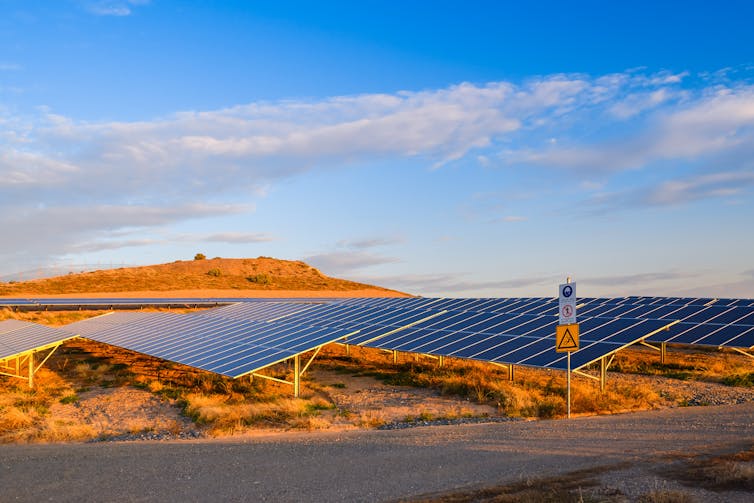
And at the end of the day, gas is still a fossil fuel. There are approximately 22 major gas production and export projects proposed for Australia. A report from The Australia Institute in September 2020 suggested that, if produced, these projects could lead to about half a billion tonnes of emissions.
If all potential gas resources in Australia were tapped, the report indicates it could result in emissions equivalent to three times the current annual global emissions.
Good: Investing In Critical Infrastructure
The energy deal sets aside $50 million towards the new $1.5 billion electricity interconnector between South Australia and NSW. This is critical infrastructure that will allow South Australia, Victoria and NSW to share energy reserves.
Indeed, the Australian Energy Market Operator has reported in excess of 5,000 megawatts of renewable energy projects near the proposed interconnector. This means South Australian wind and solar could contribute more significantly to electricity generation in both Victoria and NSW.
In turn, this will have a positive effect on pricing. Forecasts suggest the proposed new interconnector could reduce power bills by up to $66 a year in South Australia and $30 in NSW.
The energy deal also reserves funding for “investment priority areas”, which include carbon capture storage, electric vehicles and hydrogen. For example, $110 million is allocated for energy storage projects. This level of funding will help develop a world-class hydrogen export industry in South Australia.
The Verdict
The energy deal is a funding win for renewable energy and technology, with energy technology advancing much faster than anticipated. However, its focus on gas is environmentally and economically regressive.
It’s completely inconsistent with the powerful climate plan announced by the Joe Biden administration at the Climate Summit last week, which includes a pause and review of oil and gas drilling on US federal land and doubling energy production from offshore windfarms by 2030.
Read more: More reasons for optimism on climate change than we've seen for decades: 2 climate experts explain
In March, the European Union’s parliament voted in favour of a Carbon Border Adjustment Mechanism. This will impose a tariff on products being sold into the EU according to the amount of carbon involved in making them. The Biden administration in the US has announced a similar plan.
What’s more, the European Union and the US, as outlined at the recent Climate Summit, are planning to impose fees or quotas on goods from countries failing to meet their climate and environmental obligations. This may mean Australian manufacturers will end up paying for the governments failure to take rapid action to drive down emissions.
Bilateral agreements provide critical planning and funding for Australia’s energy progression. However, they should not prolong the use of fossil fuels under the guise of energy security. To do so undermines global climate change imperatives and hinders Australia’s progress in a new energy era.![]()
Samantha Hepburn, Director of the Centre for Energy and Natural Resources Law, Deakin Law School, Deakin University
This article is republished from The Conversation under a Creative Commons license. Read the original article.
More reasons for optimism on climate change than we've seen for decades: 2 climate experts explain
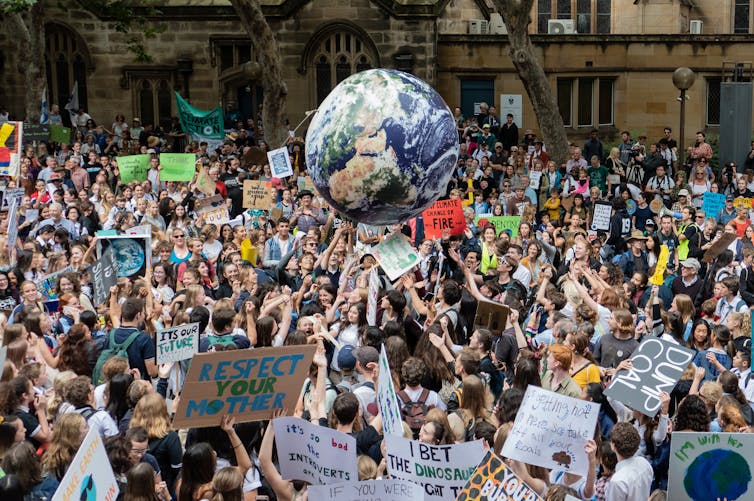
It’s unusual for researchers who study our catastrophically changing climate to use the words “optimism” and “climate change” in the same sentence.
As an Intergovernmental Panel on Climate Change (IPCC) lead author and a climate communication researcher, we well understand how grave the climate situation is. The science projections tell us we’re not on track to stay under the Paris Agreement’s 2℃ target. Our planet’s biodiversity and oceans are in peril. And if we reach climate tipping points, we’ll have little ability to mitigate runaway climate change.
But what if we were to come to a tipping point for climate action?
At Biden’s climate summit last week, the US committed to a 50-52% cut in greenhouse gas emissions reduction on 2005 levels by 2030. The UK promised a 78% emissions reduction by 2035, while the EU pledged to cut emissions 55% by 2030 on 1990 levels. And Japan committed to a 46% cut by 2030 on 2013 emissions.
Australia, however, brought nothing new to the table in terms of emissions, offering no further cuts to its planned 26-28% reduction on 2005 emissions by 2030.
Australia’s lack of ambition aside, the summit is not the only sign transformation in the global climate effort is underway. Recently, more reasons for optimism have emerged than we’ve seen for decades.
A Groundswell Of Change
The science on climate change is now more detailed than ever. Although much of it is devastating, it’s also resoundingly clear. The IPCC’s AR6 reports — the latest assessment of the science and social responses to climate change — will be released in time for the next major climate summit, COP26, in Glasgow in November. This means policy makers will have a stronger directive than ever on the urgency to act.
It’s now also unequivocal that people want action. The largest ever global opinion survey on climate change, The Peoples’ Climate Vote, found in late 2020 that 64% of people consider the climate crisis a “global emergency”.
This poll also showed strong support for wide-ranging policy action. Support for climate action was above 80% in all countries among people with post-secondary education, underscoring the importance of education in advancing support for climate-friendly policy.
Policy makers at last seem to be taking both science and public will for action seriously. Some 120 countries have committed to achieving net zero emissions by 2050. Even the current largest emitter, China, has committed to carbon neutrality by 2060, or sooner.
Business and finance are also on board. Internationally, the Taskforce on Climate-related Financial Disclosures and, at home, the Australian Prudential Regulation Authority now consider climate change mitigation central to corporations’ due care and diligence. Company directors who fail to consider and disclose climate-related risks could now be held liable under Australia’s Corporations Act.
International finance and insurers, are also progressively abandoning coal. And investment in climate solutions is garnering increasing interest. There is much opportunity in this domain: the OECD estimated in 2017 that investment of US$6.9 trillion a year over 15 years in clean energy infrastructure would be needed to keep global temperature rise under 2℃.
Carbon border taxes are also now being mooted, so countries will pay for their high-emissions supply chains in taxes on their exports. Australia is particularly exposed in this regard, given it’s slower to decarbonise than many of its trading partners.
Better Social Understanding Of Climate
The unprecedented student climate strikes in 2019 brought climate change repeatedly onto media agendas and into conversations around dinner tables. The student strikers can no doubt be credited with setting off the first domino in a tipping point for action that seems to be beginning now.
In the past two years, we have seen greater visibility and increased social understanding of climate change. Globally, films like David Attenborough’s climate testament, A Life on Our Planet, have made the climate and biodiversity crisis unflinchingly clear for audiences around the world. In Australia, popular media outputs — such as the film 2040, ABC’s Fight for Planet A and Big Weather — have enhanced Australians’ climate literacy.
While climate denial still exists, people overwhelmingly understand climate change is real and is contributing to disasters such as the 2019-2020 Black Summer bushfires. In fact, 82% of Australians think climate change will lead to more bushfires.
Though research on social understanding of climate has long shown climate change makes people feel powerless, we now have tools giving us agency to act by meaningfully reducing our own emissions, such as carbon accounting apps that help us track and minimise household emissions.
And such change from below is significant: some research shows household emissions account for 72% of the global total. So with the right incentives (we’ll need both carrots and sticks) behavioural change could contribute significantly to emissions reductions.
Actions For The Decisive Decade
For the first time, then, political will and global public opinion seem focused on profound action across many domains. This could mean we’re not bound to the current heating trajectory. But to elude a catastrophic temperature rise of 3-4℃ by 2100, we must make political ambitions, collective change and personal contributions concrete.
Actions for this decisive decade include putting the international commitments to deep emissions cuts into action, with clear pathways to net zero. Ambitions on cuts will have to be continually ratcheted up, this decade, with developed countries making the greatest reductions. Climate laggards - as Australia is increasingly characterised - will need to step up.
Coal will have to be phased out quickly, carbon pollution taxed and investment in climate solutions incentivised. People in developed countries will need to accept fundamental lifestyle changes and decision makers must construct policies to guide such change. Governments must make policy based on science — which the coronavirus pandemic has shown we can do.
It seems we’re heading for an “overshoot” scenario, where the global temperature rise will exceed 1.5℃, before we pull the temperature back down over decades with negative emissions. Investment in such technology initiatives as direct air carbon dioxide capture, must be massively scaled up. Nature-based solutions such as reafforestation and restoration of carbon sequestering ecosystems, on land and in the water, will also be crucial.
Above all, we need to act fast. The 2020s really are our final chance: our “Earthshot” moment to start to repair the planet after decades of inaction.
Gabi Mocatta, Lecturer in Communication, Deakin University, and Research Fellow in Climate Change Communication, Climate Futures Program, University of Tasmania and Rebecca Harris, Senior Lecturer in Climatology, Director, Climate Futures Program, University of Tasmania
This article is republished from The Conversation under a Creative Commons license. Read the original article.
Meet 5 of Australia’s tiniest mammals, who tread a tightrope between life and death every night
Andrew Baker, Queensland University of TechnologyAustralia has a rich diversity of mammals, with around 320 native, land-based species, 87% of which are found here and nowhere else. Many of these mammals are secretive, only active at night, and small, weighing less than one kilogram.
Mammals are “endotherms”, which means they must generate their own heat and maintain the temperature within a narrow range. This requires a lot of food.
For small mammals, which have a high surface area to volume ratio, the energetic cost is even higher. This makes them particularly prone to heat gain and loss, putting them in peril every night.
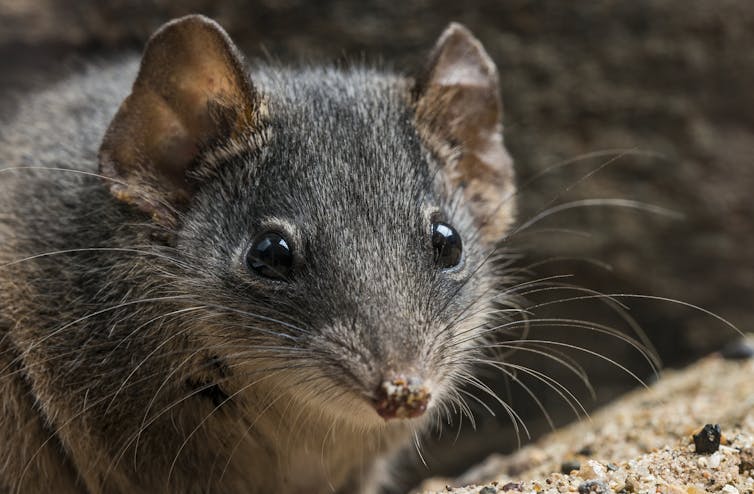
So How On Earth Do They Cope?
Well, there are some advantages to being small. It’s harder to be seen by predators, and there are more places to hide. If the soil type is right, there’s no shortage of cracks and holes to slip into.
Such habitats not only keep small mammals concealed from predators during the day and parts of the night, but the temperature and humidity is also more stable underground, which means they expend less energy in maintaining body temperature.
To further conserve energy, many small mammals will also enter “torpor” — an inactive period that slows down their energy-burning metabolism. Torpor is like a mini hibernation that typically lasts for hours, rather than days.
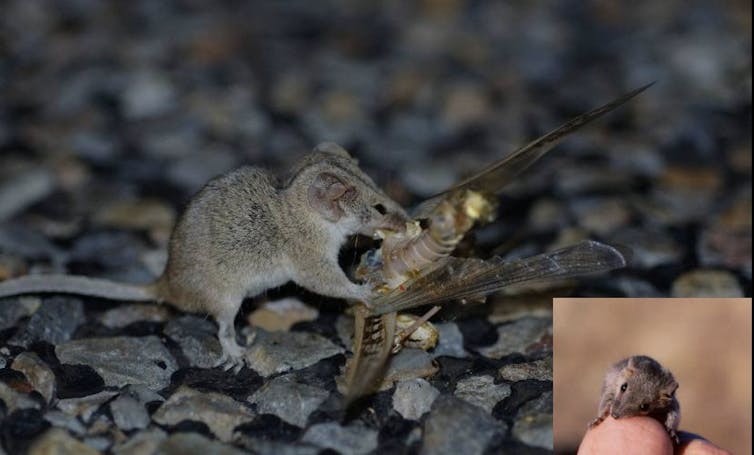
For small mammals — prone to losing heat and needing to catch and eat up to half their body weight in food each night — having some periods of down-time during energy-conserving torpor can mean the difference between life and death.
In addition to the nightly challenge of finding enough food to maintain a stable body temperature, keep a complex brain functioning and have enough energy to move up to several kilometres, Australia’s small mammals face a host of human-caused threats. These include habitat clearing, climate change and feral predators.
The combined pressures have too often proven insurmountable. With 34 species lost forever, Australia has the worst modern-day mammal extinction record of any country on Earth.
So how can we turn this appalling situation around?
First, we humans must appreciate these unique animals and decide they need to be saved. That requires knowledge and understanding, so let’s get to know some of these mysterious mammals a little better.
1. Long-Tailed Planigale (Planigale Ingrami)
Weight: 2.6-6.6 grams (up to two 10c coins)
Can you imagine a mammal that can weigh less than a ten-cent piece yet leaps five times its own height to bring down prey far larger than itself with persistent, savage biting to the head and neck?
This is the long-tailed planigale, the smallest Australian marsupial and one of the world’s smallest mammals.
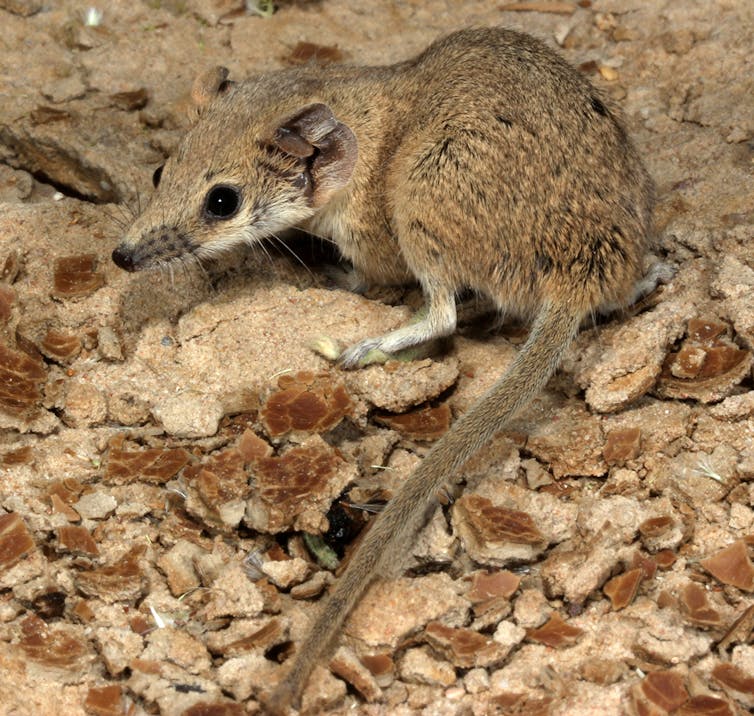
They are ferocious predators, and anything that can be subdued is viciously attacked, including large centipedes, spiders, insects, small lizards, and even other small mammals.
They live in narrow crevices of cracking clays in blacksoil plains and move below and above the surface at night in search of food. Here, they run the risk of being eaten by predators, such as owls and feral cats.
Read more: Photos from the field: zooming in on Australia's hidden world of exquisite mites, snails and beetles
The conversion of grassland to agriculture and cattle grazing causes the soil to become compacted, which also poses a threat to this species.
2. Little Forest-Bat (Vespadelus Vulturnus)
Weight: 2.6-5.5 grams (up to two 10c coins)
The little forest-bat is a denizen of various forest types found throughout southeastern Australia.
Its activity depends on temperature — in some parts of southern Australia, during cold periods, individuals may not emerge from roosts for several weeks.
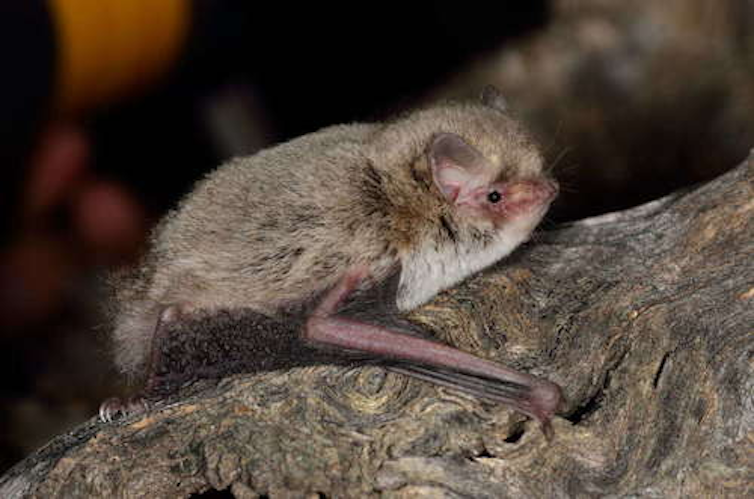
This species feeds exclusively on flying insects, including moths and mosquitoes.
And they’re not considered threatened — unlike most Australian mammals, they appear to be tolerant of disturbance and will utilise agricultural or urban landscapes if no woodland habitat is available.
3. Eastern Pebble-Mouse (Pseudomys Patrius)
Weight: 10-19 grams (up to seven 10c coins)
This is one of four species of tiny native mice that construct mounds of pebbles that comprise conical, volcano-like ramparts built around burrow entrances. This is unique behaviour among the world’s mammals.
The pebble mounds can be large, weighing more than 50 kilograms and encompassing 10 square metres — astonishing constructions given the architects weigh as little as 10 grams!
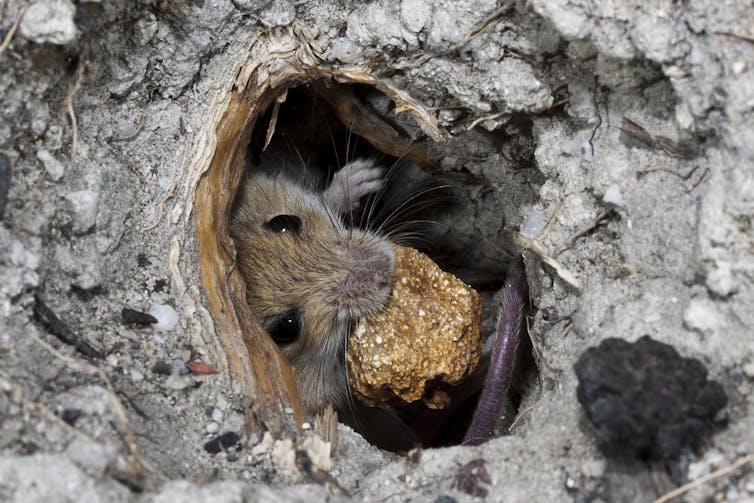
Mounds are energetically expensive to build. They are a critical limiting resource for eastern pebble-mice because females raise their litters in the mounds and their female offspring tend to disperse only as far as the next available mound. Some mounds may even remain in use for centuries, re-used by successive generations.
The erosion of hills and spread of dune fields in arid Australia are reducing the distributions of pebble-mice.
4. Mountain Pygmy Possum (Burramys Parvus)
Weight: 30-82 grams (up to nine $1 coins)
The famously adorable mountain pygmy possum is the only Australian mammal limited to alpine and sub-alpine regions, where snow covers the ground for up to six months of the year.
The possums may move more than one kilometre each night in search of food, which includes seeds, fruits, spiders and insects. They have a preference for Bogong moths (Agrotis infusa).
They double their body weight prior to hibernation, which lasts between five and seven months. During this time, their body temperatures may drop down to 2℃ for up to 20 days at a time.
This species is endangered, and there may be as few as several thousand individuals in total across three isolated populations.
Their biggest threats include droughts due to climate change, predation by feral cats and foxes, and habitat destruction, particularly after the devastating 2019-20 bushfires razed 15% of the species’ range.
5. Silver-Headed Antechinus (Antechinus Argentus)
Weight: 16-52 grams (up to six $1 coins)
The 15 species in the genus Antechinus are “suicidal reproducers”. All males drop dead at the end of the breeding season, poisoned by their own raging hormones.
This is because the stress hormone cortisol rises during the two-week breeding period. At the same time, surging testosterone from the super-sized testes in males causes a failure in the biological switch that turns off the cortisol. The flood of unbound cortisol results in systemic organ failure and the inevitable death of every male.
But this happens only after they’ve unloaded their precious cargo of sperm, mating with as many promiscuous females as possible in marathon sessions lasting up to 14 hours.
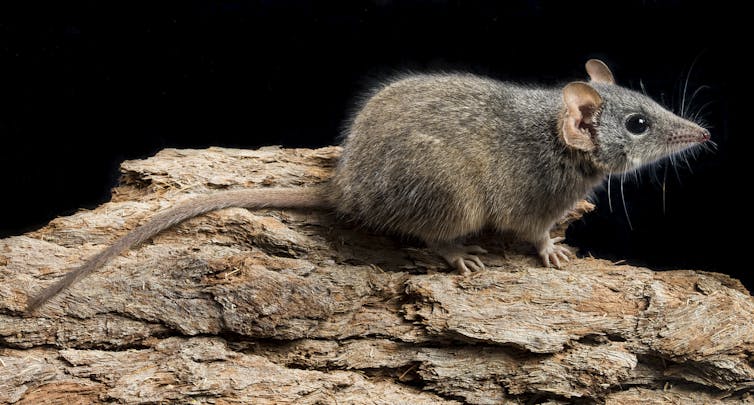
Silver-headed antechinuses are found only patchily in a few isolated populations of high-altitude wet forest in mid-eastern Australia. They eat mostly insects and spiders and are likely preyed upon by owls and feral cats.
The silver-headed antechinus is endangered and threatened by climate change. The species lost almost one-third of its core habitat in the 2019-20 megafires.
Yet, torpor can assist here as well, even after such extreme events. Antechinuses (and other small mammals) are known to use torpor more often after fire, when food is scarce and the risk of predation is higher, as there are fewer places to hide in a scorched landscape.
Read more: Animal response to a bushfire is astounding. These are the tricks they use to survive ![]()
Andrew Baker, Senior Lecturer, Queensland University of Technology
This article is republished from The Conversation under a Creative Commons license. Read the original article.
Next time you see a butterfly, treasure the memory: scientists raise alarm on these 26 species
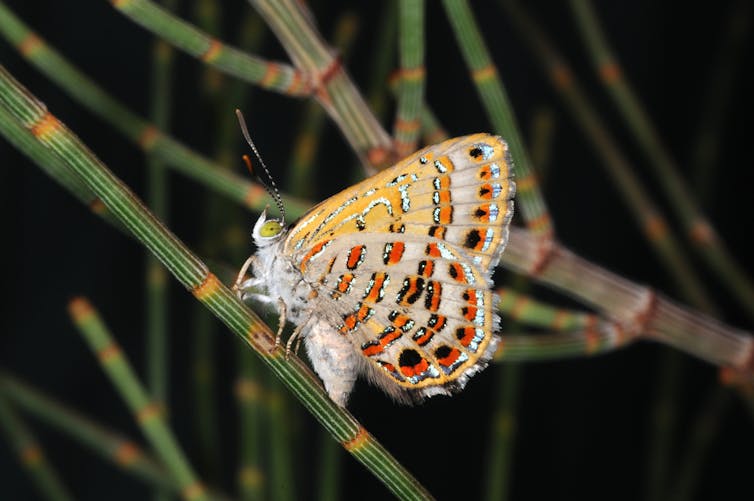
It might sound like an 18th century fashion statement, but the “pale imperial hairstreak” is, actually, an extravagant butterfly. This pale blue (male) or white (female) butterfly was once widespread, found in old growth brigalow woodlands that covered 14 million hectares across Queensland and News South Wales.
But since the 1950s, over 90% of brigalow woodlands have been cleared, and much of the remainder is in small degraded and weed infested patches. And with it, the butterfly numbers have dropped dramatically.
In fact, our new study has found it has a 42% chance of extinction within 20 years.
It isn’t alone. Our team of 28 scientists identified the top 26 Australian butterfly species and subspecies at greatest risk of extinction. We also estimated the probability that they will be lost within 20-years.
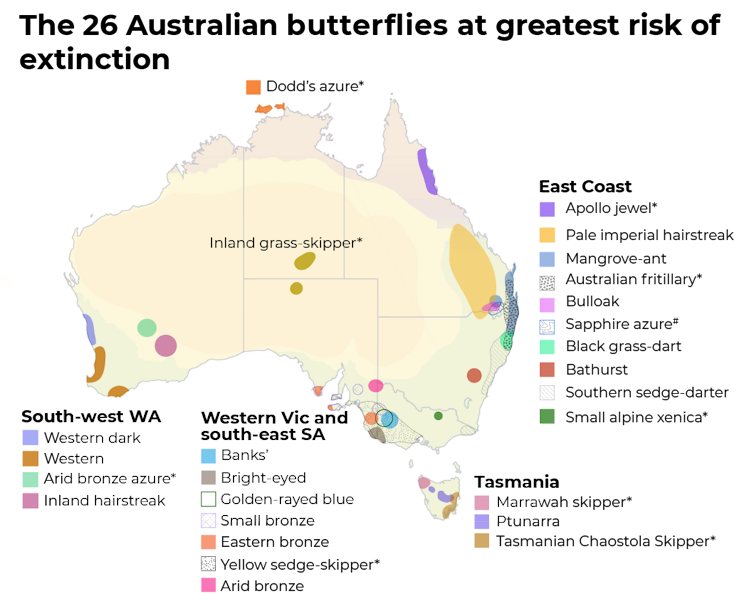
Without concerted new conservation effort, we’ll not only lose unique elements of Australia’s nature, but also the important ecosystem services these butterflies provide, such as pollination.
Only Six Are Protected Under Law
We are now sounding the alarm as most species identified as at risk have little or no management underway to conserve them, and only six of the 26 butterflies identified are currently listed for protection under Australian law.
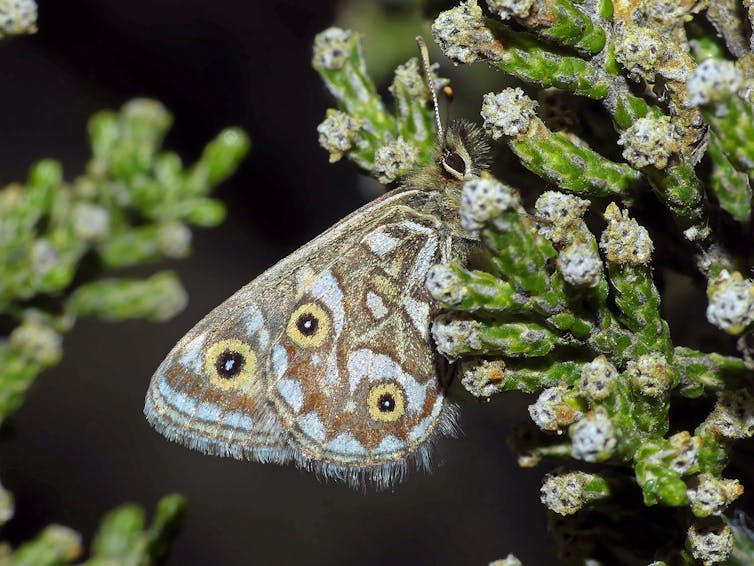
The good news is there’s still a very good chance of recovery for most of these species, but only with new targeted conservation effort, such as protecting habitat from clearing and weeds, better fire management and establishing more of the right caterpillar food plants.
Let’s Meet A Few At-Risk Butterflies
The butterflies identified are delightful and fascinating creatures, with intriguing lifecycles, including fussy food preferences, subterranean accommodation and intimate relationships with “servant” ants.
The Australian fritillary
Our most imperilled butterfly is the Australian fritillary, with a 94% chance of extinction within 20 years. Like many of our butterfly species, a major threat facing the fritillary is habitat loss and habitat change.
The swamps where the fritillary occur have been drained for farming and urbanisation. At remaining swamps, weeds smother the native violets the larvae depend on for food.
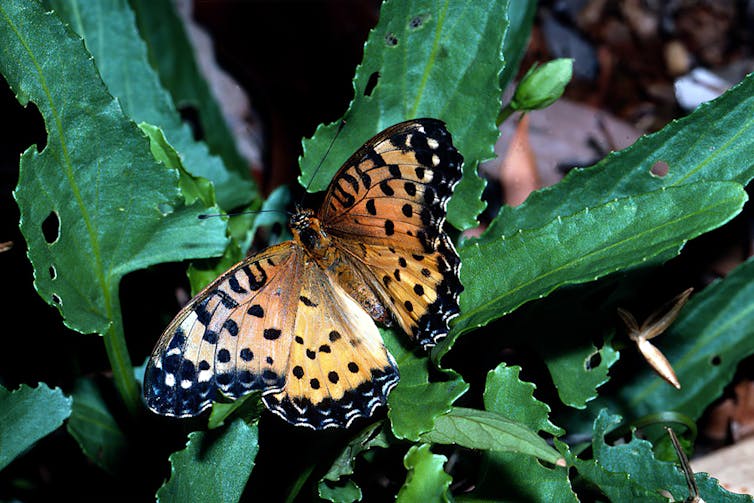
No one has managed to collect or take a photo of a fritillary in two decades, although a butterfly expert observed a single individual flying near Port Macquarie in 2015.
It might already be extinct, but as it was once quite widespread at swampy areas along 700 kilometres of coastal Queensland and NSW, we have hope there are still some out there.
The fritillary has impressive jet black caterpillars with a vibrant orange racing stripe and large spikes along their back, which transform into stunning orange and black butterflies.
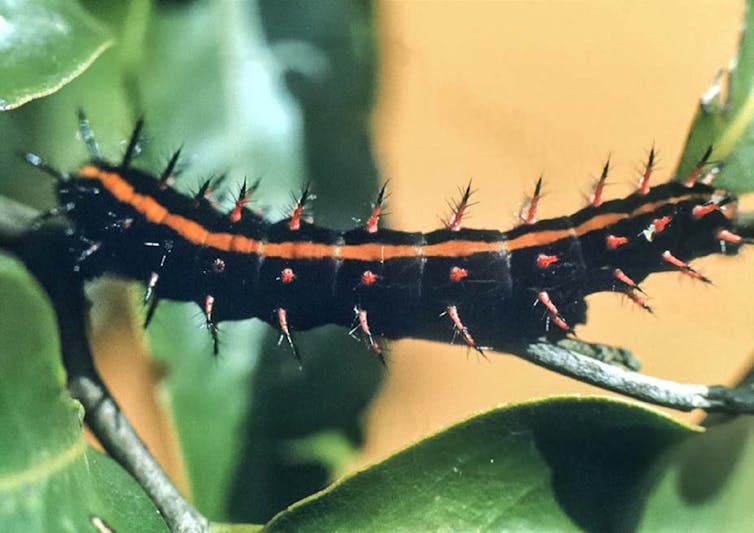
Anyone who thinks they have seen a fritillary should record the location, try to photograph it and the site and immediately contact the NSW Department of Planning Industry and Environment.
The fritillary is among many butterflies with specific diets. And these preferences can make species vulnerable to environmental changes such as vegetation clearing, weed invasions and fires.
Read more: Photos from the field: zooming in on Australia's hidden world of exquisite mites, snails and beetles
The small bronze azure
Caterpillars of the small bronze azure — found on Kangaroo Island (and a few other patches in South Australia and Victoria) — only eat common sourbush.
Following the extensive 2020 fires, the butterfly hasn’t been found in areas where the sourbush burnt. Luckily, it’s been found in small patches of unburnt vegetation, so for now it’s hanging in there.
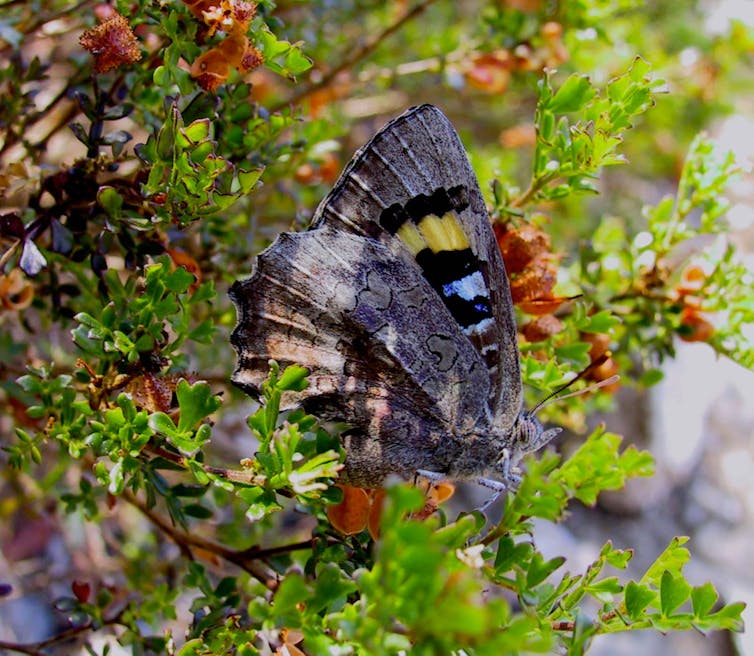
Like many butterflies, the lifecycle of the small bronze azure is enmeshed with a specific species of ant.
By day the butterfly larvae shelter underground in sugar ant (Camponotus terebrans) nests, then at night they’re escorted up by the ants to feed on the sourbush. For their care the ants are rewarded by a sugary secretion the caterpillars produce.
The eastern bronze azure
Some relationships with ants are even more unusual. Kangaroo Island’s other imperilled species — the eastern bronze azure — stays underground in sugar ant nests for 11 straight months. We don’t yet know what they eat.

In a macabre twist, they may be eating their hosts — the ants or the ant larvae. So why the ants carry them down and look after them is also a mystery.
It might be for sugary secretions, like with the small bronze azure, but the caterpillars could also be using chemical trickery, mimicking the scent of ant larvae to fool the ants.
Adults of the eastern bronze azure emerge only to flutter about for a few weeks in November, so at the time of the Kangaroo Island fires in January the entire population was safely underground in ant nests. And as the larvae don’t come up to feed on plants, they weren’t impacted by the loss of vegetation.
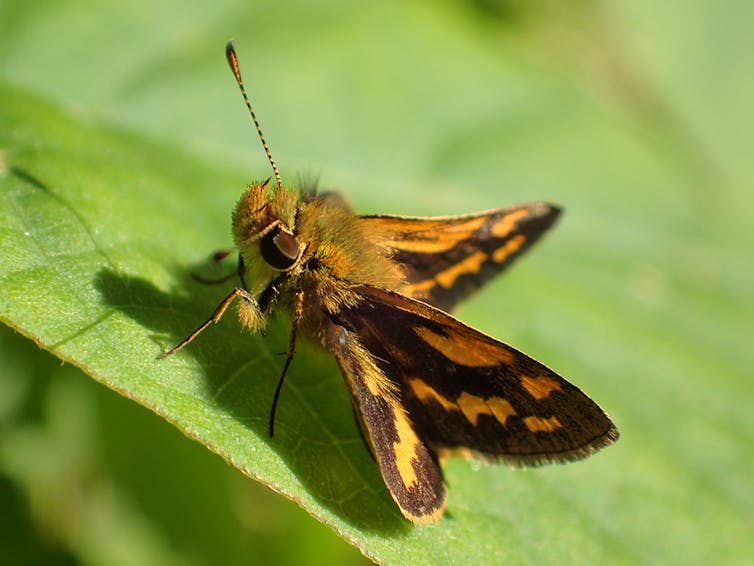
It’s Not Too Late To Save Them
By raising awareness of these butterflies and the risks they face, we aim to give governments, conservation groups and the community time to act to prevent their extinctions.
Local landowners and Landcare groups have already been playing a valuable role in recovery actions for several species, such as planting the right food plants for the Australian fritillary around Port Macquarie, and for the Bathurst copper.
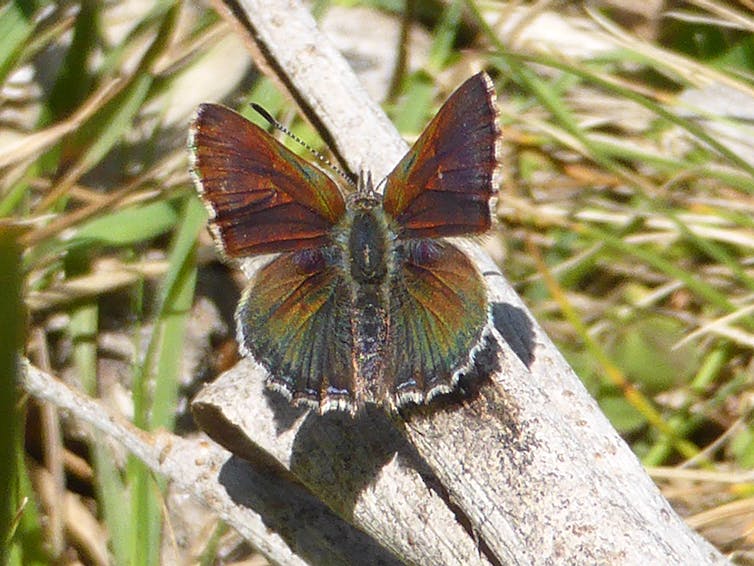
Indeed, most of the identified at-risk species occur across a mix of land types, including conservation, public and private land. In most cases, conservation reserves alone aren’t enough to ensure the long-term survival of the species.
Many landowners don’t realise they’re important custodians of such rare and threatened butterflies, and how important it is not to clear remaining patches of remnant native vegetation on their properties and adjoining road reserves.
People wanting to learn more about the butterfly species near them can use the free Butterflies Australia app to look up photos and information. You can also be a citizen scientist by recording and uploading sightings on the app.
Read more: Curious Kids: Do butterflies remember being caterpillars? ![]()
Michael F. Braby, Associate Professor, Australian National University; Hayley Geyle, Research Assistant, Charles Darwin University; Jaana Dielenberg, University Fellow, Charles Darwin University; Phillip John Bell, University Associate, School of Natural Sciences, University of Tasmania; Richard V Glatz, Associate research scientist; Roger Kitching, Emeritus Professor, Griffith University, and Tim R New, Retired: Emeritus Professor in Zoology, La Trobe University
This article is republished from The Conversation under a Creative Commons license. Read the original article.
New Shorebirds WingThing For Youngsters Available To Download
A Shorebirds WingThing educational brochure for kids (A5) helps children learn about shorebirds, their life and journey. The 2021 revised brochure version was published in February 2021 and is available now. You can download a file copy here.
If you would like a free print copy of this brochure, please send a self-addressed envelope with A$1.10 postage (or larger if you would like it unfolded) affixed to: BirdLife Australia, Shorebird WingThing Request, 2-05Shorebird WingThing/60 Leicester St, Carlton VIC 3053.

 Shorebird Identification Booklet
Shorebird Identification Booklet
The Migratory Shorebird Program has just released the third edition of its hugely popular Shorebird Identification Booklet. The team has thoroughly revised and updated this pocket-sized companion for all shorebird counters and interested birders, with lots of useful information on our most common shorebirds, key identification features, sighting distribution maps and short articles on some of BirdLife’s shorebird activities.
The booklet can be downloaded here in PDF file format: http://www.birdlife.org.au/documents/Shorebird_ID_Booklet_V3.pdf
Paper copies can be ordered as well, see http://www.birdlife.org.au/projects/shorebirds-2020/counter-resources for details.
Download BirdLife Australia's children’s education kit to help them learn more about our wading birdlife
Shorebirds are a group of wading birds that can be found feeding on swamps, tidal mudflats, estuaries, beaches and open country. For many people, shorebirds are just those brown birds feeding a long way out on the mud but they are actually a remarkably diverse collection of birds including stilts, sandpipers, snipe, curlews, godwits, plovers and oystercatchers. Each species is superbly adapted to suit its preferred habitat. The Red-necked Stint is as small as a sparrow, with relatively short legs and bill that it pecks food from the surface of the mud with, whereas the Eastern Curlew is over two feet long with a exceptionally long legs and a massively curved beak that it thrusts deep down into the mud to pull out crabs, worms and other creatures hidden below the surface.
Some shorebirds are fairly drab in plumage, especially when they are visiting Australia in their non-breeding season, but when they migrate to their Arctic nesting grounds, they develop a vibrant flush of bright colours to attract a mate. We have 37 types of shorebirds that annually migrate to Australia on some of the most lengthy and arduous journeys in the animal kingdom, but there are also 18 shorebirds that call Australia home all year round.
What all our shorebirds have in common—be they large or small, seasoned traveller or homebody, brightly coloured or in muted tones—is that each species needs adequate safe areas where they can successfully feed and breed.
The National Shorebird Monitoring Program is managed and supported by BirdLife Australia.
This project is supported by Glenelg Hopkins Catchment Management Authority and Hunter Local Land Services through funding from the Australian Government’s National Landcare Program. Funding from Helen Macpherson Smith Trust and Port Phillip Bay Fund is acknowledged.
The National Shorebird Monitoring Program is made possible with the help of over 1,600 volunteers working in coastal and inland habitats all over Australia.
The National Shorebird Monitoring program (started as the Shorebirds 2020 project initiated to re-invigorate monitoring around Australia) is raising awareness of how incredible shorebirds are, and actively engaging the community to participate in gathering information needed to conserve shorebirds.
In the short term, the destruction of tidal ecosystems will need to be stopped, and our program is designed to strengthen the case for protecting these important habitats.
In the long term, there will be a need to mitigate against the likely effects of climate change on a species that travels across the entire range of latitudes where impacts are likely.
The identification and protection of critical areas for shorebirds will need to continue in order to guard against the potential threats associated with habitats in close proximity to nearly half the human population.
Here in Australia, the place where these birds grow up and spend most of their lives, continued monitoring is necessary to inform the best management practice to maintain shorebird populations.
BirdLife Australia believe that we can help secure a brighter future for these remarkable birds by educating stakeholders, gathering information on how and why shorebird populations are changing, and working to grow the community of people who care about shorebirds.
To find out more visit: http://www.birdlife.org.au/projects/shorebirds-2020/shorebirds-2020-program
Aussie Bread Tags Collection Points

2021 HSC Timetable Released
- provide sufficient breaks between exams for popular courses
- provide sufficient breaks between exams for frequently combined courses
- enable all exams to be marked and students to receive their results from 6:00am on Friday 10 December
- minimise the number of students with two exams scheduled at the same time.
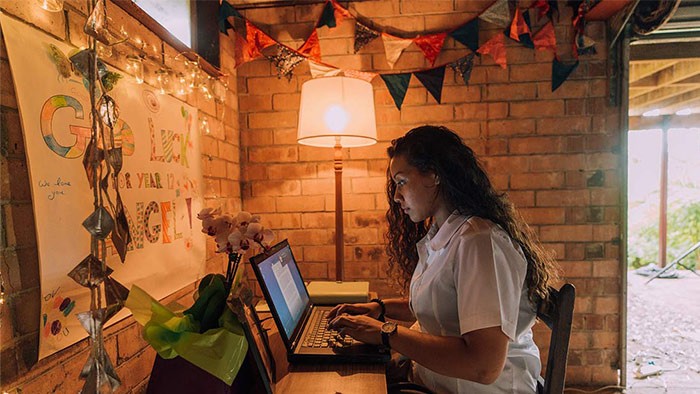
Netball World Cup 2027 Returns To Sydney
April 26, 2021
Australian netball fans will once again have the chance to see the world’s best netballers in action on home soil, with the NSW Government today announcing the International Netball Federation Netball World Cup will return to Sydney in 2027.
ecured by the NSW Government, in partnership with Netball Australia, the 2027 Netball World Cup is expected to deliver an estimated $31 million boost to the NSW visitor economy.
Premier Gladys Berejiklian said winning the hosting rights for this major sporting tournament brings NSW one step closer to fulfilling the NSW Government’s 2018 pledge to secure 10 World Cups in 10 years.
“The Netball World Cup 2027 is the ninth addition to the NSW Government’s 10 World Cups in 10 years initiative, which means we are well on track to not just deliver but to exceed this target,” Ms Berejiklian said
“The NSW Government’s COVID-19 response has enabled our State to put a strong bid forward for major events like this and I have no doubt there will be more to follow, delivering enormous economic and social benefits to our State for years to come.
“This is the fourth Women’s World Cup event secured for Sydney alongside the ICC Women’s T20 World Cup 2020, FIBA Women’s Basketball World Cup 2022 and the FIFA Women’s World Cup 2023.”

Minister for Investment, Jobs, Tourism and Western Sydney Stuart Ayres said the chance to host the prestigious event was testament to an exemplary record of hosting international sporting events throughout NSW.
“Sydney set the benchmark with a record-breaking Netball World Cup in 2015 and I have no doubt we will put on an even bigger and better show when the event returns to our shores,” Mr Ayres said.
“This will be the third time the Netball World Cup has been held in Sydney and with Australia winning the previous two tournaments in 1991 and 2015, all of NSW will be hoping Australia can bring the trophy home for a third time in 2027.”
“Hosting major events like this is crucial in helping our tourism and events industry recover from the COVID-19 pandemic, creating jobs and leveraging the extensive expertise our State has in delivering major sporting events throughout NSW.”
Minister for Sport Geoff Lee said hosting the Netball World Cup will grow participation and inspire future generations of netballers. “In 2015 the Australian Diamonds shined in front of packed home crowds in Sydney, breaking records on and off the court,” Mr Lee said.
“NSW boasts over 115,000 netballers across the State, which equates to 25% of the national pool. “I am very confident the Netball World Cup 2027 will see current and future generations of NSW netballers aspiring to wear the green and gold.”
International Netball Federation President Liz Nicholl, CBE, said she was confident in Sydney delivering an excellent event, whilst also focusing on the development of the sport across Australia.
“As our sport continues to grow and evolve at an unprecedented rate around the globe, we look forward to working with the Organising Committee and Netball Australia on netball’s growth and development whilst delivering a thrilling world-class event that will no doubt inspire all and work towards creating a better world through netball,” Ms Nicholl said.
Netball Australia Chair Paolina Hunt said securing the 2027 World Cup was another critical step in the rapid development of the sport.
‘’We know that netball plays a key role in connecting and empowering young women and girls and an event such as this is a North star for young athletes who can now dream of working to represent the Diamonds in front of huge home crowds,” Ms Hunt said.
A key element of Australia’s bid was a post-tournament legacy that will deliver lasting benefits for women and girls both within netball and the broader community.
Following today’s announcement, a Local Organising Committee will be established with further details about the tournament to be advised once finalised.
Visit the Netball Australia website for more information on the 2027 Netball World Cup.
Apple's new 'app tracking transparency' has angered Facebook. How does it work, what's all the fuss about, and should you use it?

Apple users across the globe are adopting the latest operating system update, called iOS 14.5, featuring the now-obligatory new batch of emojis.
But there’s another change that’s arguably less fun but much more significant for many users: the introduction of “app tracking transparency”.
This feature promises to usher in a new era of user-oriented privacy, and not everyone is happy — most notably Facebook, which relies on tracking web users’ browsing habits to sell targeted advertising. Some commentators have described it as the beginnings of a new privacy feud between the two tech behemoths.
So, What Is App Tracking Transparency?
App tracking transparency is a continuation of Apple’s push to be recognised as the platform of privacy. The new feature allows apps to display a pop-up notification that explains what data the app wants to collect, and what it proposes to do with it.
There is nothing users need to do to gain access to the new feature, other than install the latest iOS update, which happens automatically on most devices. Once upgraded, apps that use tracking functions will display a request to opt in or out of this functionality.

How Does It Work?
As Apple has explained, the app tracking transparency feature is a new “application programming interface”, or API — a suite of programming commands used by developers to interact with the operating system.
The API gives software developers a few pre-canned functions that allow them to do things like “request tracking authorisation” or use the tracking manager to “check the authorisation status” of individual apps.
In more straightforward terms, this gives app developers a uniform way of requesting these tracking permissions from the device user. It also means the operating system has a centralised location for storing and checking what permissions have been granted to which apps.
What is missing from the fine print is that there is no physical mechanism to prevent the tracking of a user. The app tracking transparency framework is merely a pop-up box.
It is also interesting to note the specific wording of the pop-up: “ask app not to track”. If the application is using legitimate “device advertising identifiers”, answering no will result in this identifier being set to zero. This will reduce the tracking capabilities of apps that honour Apple’s tracking policies.
However, if an app is really determined to track you, there are many techniques that could allow them to make surreptitious user-specific identifiers, which may be difficult for Apple to detect or prevent.
For example, while an app might not use Apple’s “device advertising identifier”, it would be easy for the app to generate a little bit of “random data”. This data could then be passed between sites under the guise of normal operations such as retrieving an image with the data embedded in the filename. While this would contravene Apple’s developer rules, detecting this type of secret data could be very difficult.
Read more: Your smartphone apps are tracking your every move – 4 essential reads
Apple seems prepared to crack down hard on developers who don’t play by the rules. The most recent additions to Apple’s App Store guidelines explicitly tells developers:
You must receive explicit permission from users via the App Tracking Transparency APIs to track their activity.
It’s unlikely major app developers will want to fall foul of this policy — a ban from the App Store would be costly. But it’s hard to imagine Apple sanctioning a really big player like Facebook or TikTok without some serious behind-the-scenes negotiation.
Why Is Facebook Objecting?
Facebook is fuelled by web users’ data. Inevitably, anything that gets in the way of its gargantuan revenue-generating network is seen as a threat. In 2020, Facebook’s revenue from advertising exceeded US$84 billion – a 21% rise on 2019.
The issues are deep-rooted and reflect the two tech giants’ very different business models. Apple’s business model is the sale of laptops, computers, phones and watches – with a significant proportion of its income derived from the vast ecosystem of apps and in-app purchases used on these devices. Apple’s app revenue was reported at US$64 billion in 2020.
With a vested interest in ensuring its customers are loyal and happy with its devices, Apple is well positioned to deliver privacy without harming profits.
Should I Use It?
Ultimately, it is a choice for the consumer. Many apps and services are offered ostensibly for free to users. App developers often cover their costs through subscription models, in-app purchases or in-app advertising. If enough users decide to embrace privacy controls, developers will either change their funding model (perhaps moving to paid apps) or attempt to find other ways to track users to maintain advertising-derived revenue.
If you don’t want your data to be collected (and potentially sold to unnamed third parties), this feature offers one way to restrict the amount of your data that is trafficked in this way.
But it’s also important to note that tracking of users and devices is a valuable tool for advertising optimisation by building a comprehensive picture of each individual. This increases the relevance of each advert while also reducing advertising costs (by only targeting users who are likely to be interested). Users also arguably benefit, as they see more (relevant) adverts that are contextualised for their interests.
It may slow down the rate at which we receive personalised ads in apps and websites, but this change won’t be an end to intrusive digital advertising. In essence, this is the price we pay for “free” access to these services.
Read more: Facebook data breach: what happened and why it's hard to know if your data was leaked ![]()
Paul Haskell-Dowland, Associate Dean (Computing and Security), Edith Cowan University and Nikolai Hampton, School of Science, Edith Cowan University
This article is republished from The Conversation under a Creative Commons license. Read the original article.
We spent six years scouring billions of links, and found the web is both expanding and shrinking

The online world is continuously expanding — always aggregating more services, more users and more activity. Last year, the number of websites registered on the “.com” domain surpassed 150,000,000.
However, more than a quarter of a century since its first commercial use, the growth of the online world is now slowing down in some key categories.
We conducted a multi-year research project analysing global trends in online diversity and dominance. Our research, published today in Public Library of Science, is the first to reveal some long-term trends in how businesses compete in the age of the web.
We saw a dramatic consolidation of attention towards a shrinking (but increasingly dominant) group of online organisations. So, while there is still growth in the functions, features and applications offered on the web, the number of entities providing these functions is shrinking.
Web Diversity Nosedives
We analysed more than six billion user comments from the social media website Reddit dating back to 2006, as well as 11.8 billion Twitter posts from as far back as 2011. In total, our research used a massive 5.6Tb trove of data from more than a decade of global activity.
This dataset was more than four times the size of the original data from the Hubble Space Telescope, which helped Brian Schmidt and colleagues do their Nobel-prize winning work in 1998 to prove the universe’s expansion is accelerating.
With the Reddit posts, we analysed all the links to other sites and online services — more than one billion in total — to understand the dynamics of link growth, dominance and diversity through the decade.
We used a measure of link “uniqueness”. On this scale, 1 represents maximum diversity (all links have their own domain) and 0 is minimum diversity (all links are on one domain, such as “youtube.com”).
A decade ago, there was a much greater variety of domains within links posted by users of Reddit, with more than 20 different domains for every 100 random links users posted. Now there are only about five different domains for every 100 links posted.
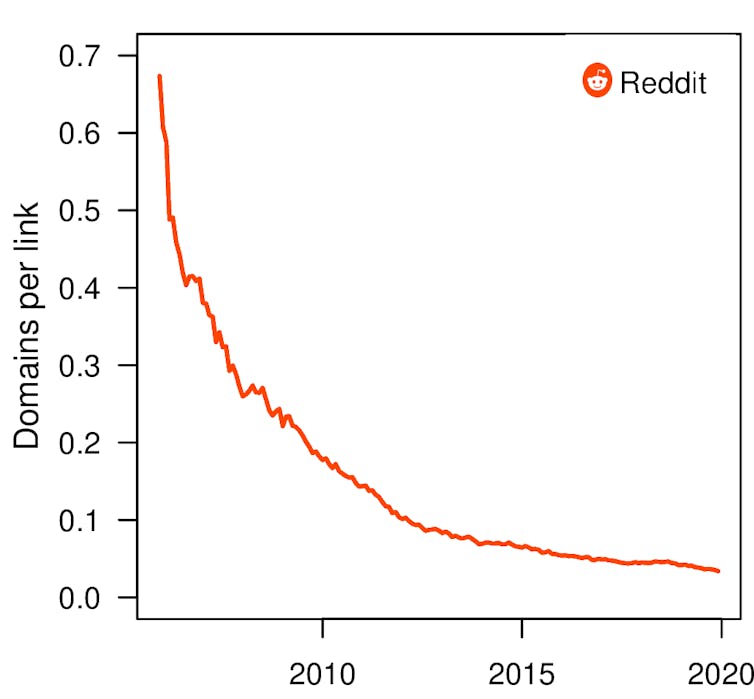
In fact, between 60—70% of all attention on key social media platforms is focused towards just ten popular domains.
Beyond social media platforms, we also studied linkage patterns across the web, looking at almost 20 billion links over three years. These results reinforced the “rich are getting richer” online.
The authority, influence and visibility of the top 1,000 global websites (as measured by network centrality or PageRank) is growing every month, at the expense of all other sites.
Read more: The internet's founder now wants to 'fix the web', but his proposal misses the mark
App Diversity Is On The Rise
The web started as a source of innovation, new ideas and inspiration — a technology that opened up the playing field. It’s now also becoming a medium that actually stifles competition and promotes monopolies and the dominance of a few players.
Our findings resolve a long-running paradox about the nature of the web: does it help grow businesses, jobs and investment? Or does it make it harder to get ahead by letting anyone and everyone join the game? The answer, it turns out, is it does both.
While the diversity of sources is in decline, there is a countervailing force of continually increasing functionality with new services, products and applications — such as music streaming services (Spotify), file sharing programs (Dropbox) and messaging platforms (Messenger, Whatsapp and Snapchat).
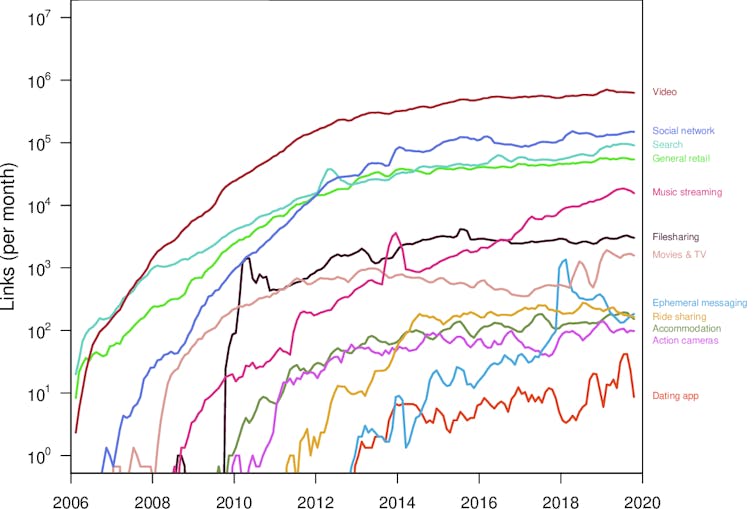
Website ‘Infant Mortality’
Another major finding was the dramatic increase in the “infant mortality” rate of websites — with the big kids on the block guarding their turf more staunchly than ever.
We examined new domains that were continually referenced or linked-to in social media after their first appearance. We found that while almost 40% of the domains created 2006 were active five years on, only a little more than 3% of those created in 2015 remain active today.
The dynamics of online competition are becoming clearer and clearer. And the loss of diversity is concerning. Unlike the natural world, there are no sanctuaries; competition is part of both nature and business.
Our study has profound implications for business leaders, investors and governments everywhere. It shows the network effects of the web don’t just apply to online businesses. They have permeated the entire economy and are rewriting many previously accepted rules of economics.
For example, the idea that businesses can maintain a competitive advantage based on where they are physically located is increasingly tenuous. Meanwhile, there’s new opportunities for companies to set up shop from anywhere in the world and serve a global customer base that’s both mainstream and niche.

The best way to encourage diversity is to have more global online businesses focused on providing diverse services, by addressing consumers’ increasingly niche needs.
In Australia, we’re starting to see this through homegrown companies such as Canva, SafetyCulture and iWonder. Hopefully many more will appear in the decade ahead.
Read more: If it’s free online, you are the product ![]()
Paul X. McCarthy, Adjunct Professor, UNSW and Marian-Andrei Rizoiu, Lecturer in Computer Science, University of Technology Sydney
This article is republished from The Conversation under a Creative Commons license. Read the original article.
All your transport options in one place: why mobility as a service needs a proper platform

Uber, Ola, Car Next Door, GoGet, Urbi and Shareabike have transformed the mobility experience for millions of people, but are just the tip of the looming iceberg of changes in transport. Globally, 93 million travellers use the Uber app on a monthly basis. More Australians use Uber (22.9%) than taxis (21.8%).
The public clearly has an appetite for mobility as a service (MaaS). People want to plan, book and pay for various forms of transport via a digital platform.
Read more: For Mobility as a Service (MaaS) to solve our transport woes, some things need to change
However, mobility service providers are actors in search of a stage. As with software, computing and entertainment, only when a properly designed and managed platform underpins all the services will the real transformation be unlocked.
The 3 Pillars Of The Platform
MaaS is part of a broader evolution as novel technologies have driven the rapid transformation of products and offerings into collections of services. Smartphone applications rely on digital distribution platforms such as Google Play Store, Apple Store, Microsoft Store and Amazon Cloud. Similarly, the evolving technologies and mechanisms of mobility systems require a platform for distribution.
Read more: We subscribe to movies and music, why not transport?
The platform concept should include at least three key elements:
integrated ticketing and payment: user payments are managed in a uniform and adaptable manner across all providers
accessible, standardised regulations with open data: regulations and data are managed to be accessible/plug-n-play, secure and equitable
reputation management: reputations of providers and users are managed in a scalable, fair and efficient way.
If the platform is designed poorly, markets will be distorted, privacy will be violated, and escalating infrastructure costs will continue to burden taxpayers.
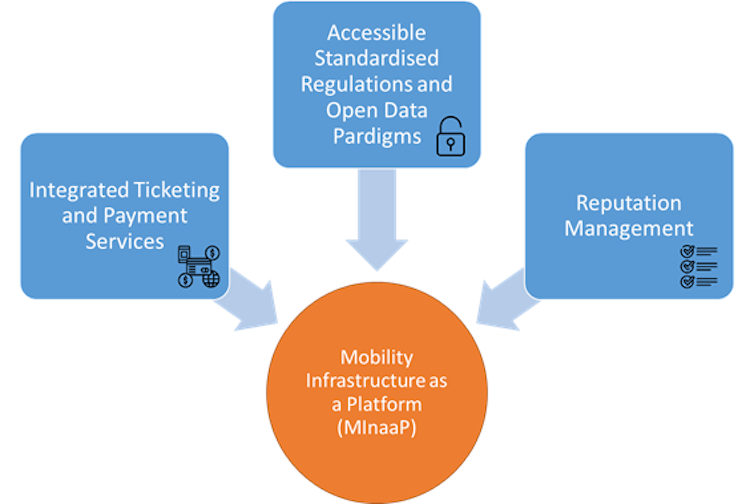
Moving Towards Integrated Payment
Historically, the transport platform has simply been the physical networks – roads, walking paths, cycle paths, rail and so on – and the ancillary infrastructure such as stations, airports, ports, vehicle storage and parking. Governments must reimagine existing physical infrastructure as part of the mobility services platform.
Recent innovations have focused not only on infrastructure development – autonomous vehicle systems, for example – but also on managing existing infrastructure. For example, cities around the world have moved towards rail automation and smart ticketing for public transport (Opal, Oyster, Octopus and Myki cards). The smart cards market for public transport in the US alone was valued at US$57.2 billion (A$73.9bn) in 2018.
Setting up seamless payment across services is the first pillar of the platform needed to support mobility as a service. It removes a major barrier to entry for service providers and users.

Significant efforts to integrate payments are ongoing. The other two essential pillars of a MaaS platform require much more attention.
Mobility as a service is seen as a solution to various transport problems, particularly by reducing private vehicle use. Customers are being promised efficient door-to-door multi-modal travel through a single holistic application. In reality, the infrastructure to achieve this is not yet present.
Research has raised questions about its benefits, social impacts and governance. For instance, emphasising smaller-scale, more flexible mobility services in unideal environments can increase congestion and undermine urban planning goals.
Why Regulation Is Essential
The value and risks the platform creates for mobility providers, users, disadvantaged groups and society must all be kept in mind. The aim should be to create a fair marketplace that enables participation, innovation, equity and quality service.
Read more: Billions are pouring into mobility technology – will the transport revolution live up to the hype?
The second pillar, accessible, standardised regulations with open data paradigms, will enable service providers to participate in a market that delivers societal benefits. Innovations by providers must conform to a common “plug-n-play” approach that meets the mobility needs of the community as efficiently as possible. Crowd-sourced data (such as from Google or TomTom), user demand data from travel cards and traffic volume data should be available in the one platform for all service providers.
This is a complex undertaking, and data privacy must be a core component. It calls for strong professional leadership.
A big part of the challenge is that civil infrastructure cannot be unified in the same way as IT infrastructure or cloud computing. Civil infrastructure, especially transport infrastructure, is also expensive to build and maintain over its long lifespan, so the MaaS platform must be able to help optimise existing infrastructure to meet public mobility needs.
Regulation based on the protection and service of society is the only way to achieve this. The regulatory framework must be standardised, fair and accessible. This means any service providers adhering to the standards can join (and leave) the market without “insider” barriers.
Balancing Profit With Public Benefits
Though it is a difficult task, we should apply the “everything as a service” concept with clear standardisation and regulation to deliver equitable and sustainable transport services.
This also offers a way to integrate profit maximisation and social welfare within transport but also involving adjacent services such as parking.
In the rail industry, standardisation has enabled more commoditised heavy and light rail systems and vehicles. Commoditisation is a process that creates reliable nearly identical products – rail services in this case – in the eyes of consumers. They can choose between these competing products based on cost and which best suits their needs at the time. This process has improved the economics, safety, accessibility and technology of rail services.
Over the past decade, the European Commission has implemented laws and policies to create a Single European Railway Area. The goal is to revitalise the sector by creating a single market for interoperable rail services that are more innovative and competitive.
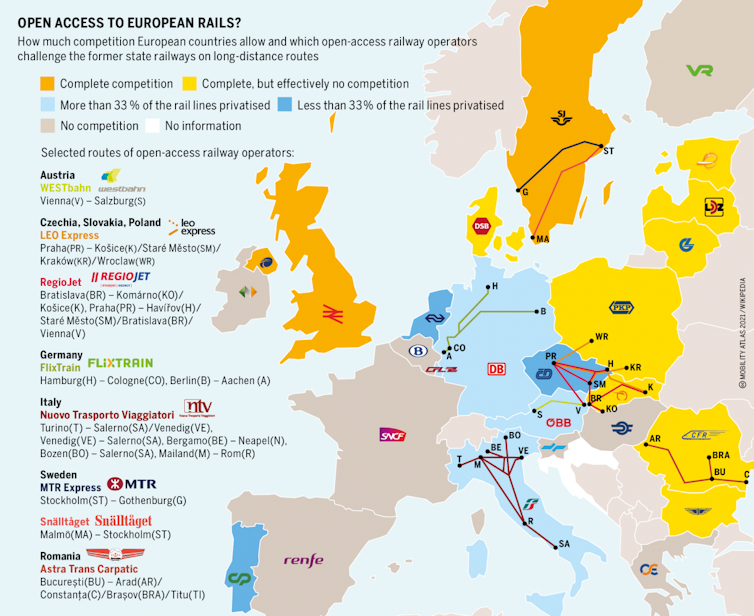
Managing Reviews And Reputations
Finally, reputation management is essential for a mobility infrastructure platform. Reviews and reputation management have been a driving force for Uber, Amazon, eBay, iTunes, Airbnb etc.
A user-driven reputational management system must be trustworthy, scalable and resistant to tampering and malignant reviews. Blockchain technologies could help build the required trust.
Mobility will increasingly be delivered as a service to travellers. New technologies combined with social awareness and strong professional leadership will all be needed to develop the platform.
This article was co-authored by Victor Prados-Valerio, a Senior Associate at the advisory firm TSA Management, who has been a project manager and senior rolling stock engineer on train, light rail and depot procurement projects in Australia and overseas.![]()
S. Travis Waller, Professor and Head of the School of Civil and Environmental Engineering, UNSW and Kasun Wijayaratna, Lecturer in Roads and Transport Engineering, University of Technology Sydney
This article is republished from The Conversation under a Creative Commons license. Read the original article.
Not every student needs senior maths, but we can make maths more engaging in the earlier school years

In late 2019, New South Wales announced it would make maths compulsory all through school. Victoria will have an additional, easier, year 12 maths subject in 2023 to boost the numbers of maths students in senior levels.
Moves to push more students into senior maths partly stem from the idea students need to be equipped with skills for jobs of the future, largely driven by automation. The federal government considers STEM (science, technology, engineering and maths) skills as “crucial for Australia’s changing future”. A resource kit for STEM educators, developed by the federal government, states:
It’s predicted that future workers will spend more than twice as much time on job tasks requiring science, maths and critical thinking than today.
But the number of students taking higher level maths has bottomed-out. Nationally, less than 30% of students choose upper level, calculus based, maths — down dramatically in the past 20 years.
There are many arguments for how to get more students to take senior maths. They include making the subject more engaging, ensuring enough specialist teachers and, of course, making maths compulsory.
Read more: Fewer Australians are taking advanced maths in Year 12. We can learn from countries doing it better
At the moment, only Tasmania requires students to take basic maths through to year 12. Students in the ACT and NSW can finish studying maths in year 10 if they choose to. South Australia, the Northern Territory and Queensland require students to take just one unit of maths in the two final years of high school.
But how important is it for every student to have graduated school with high level maths?
Maths And The Future Of Work
The argument every student needs advanced maths for his or her career doesn’t always hold. A 2013 study of 2,300 workers in the United States found less than 25% of them use maths beyond fractions in their current jobs.

But we’re told the nature of work is rapidly changing and that employment in jobs requiring STEM skills is growing faster than in others. This may be true. Although the federal government also highlights growing industries aren’t all focused on STEM skills. They include:
health care and social assistance
education and training
construction
customer service.
Most of these jobs will require strong numeracy and computational thinking skills, including problem-solving that can come from subjects outside maths.
A Deloitte report into the future of work also noted the importance of human skills in automated industries:
[…] jobs increasingly need us to use our hearts — the interpersonal and creative roles, with uniquely human skills like creativity, customer service, care for others and collaboration.
A federal government report echoes this by advising those looking for work to:
remember to emphasise your employability skills, rather than just the technical skills […] Communication, reliability, team work, patience, resilience and initiative are required for all jobs, and this will continue to be the case in the future […] Some 75% of employers considered employability skills to be as important, if not more important, than technical skills.
Maths is embedded in most of these skills. But it’s certainly not the only subject that teaches them.
What Subjects Can Give Students The Skills They Need?
Broadly speaking, some of the skills students will need in their future — in both their work and daily life — include:
cognitive flexibility: the ability to adapt to the changing world and information around you; to be a lifelong learner
traditional and digital literacies: basic literacy, numeracy and media literacy (including the use of technology)
creativity and imagination: the human traits that separate us from machines and bring a human perspective to our work
computational thinking: problem solving processes we need in our work and life
ethical and sustainable practice: a commitment to do no harm to each other or the planet
Indigenous perspectives and cultural competence: promoting reconciliation and working successfully and respectfully across cultures and customs
well-being: taking care of our minds, bodies and our mob.
These skills are not taught just in maths but across the disciplines, including science, geography, visual arts, health and physical education, languages, history and design.
What Kind Of Maths Skills Do Students Need?
In his 2016 book, The Maths Math: And Other STEM Delusions, bestselling US author Andrew Hacker proposes we allow students to explore their passions in the latter school years instead of pushing advanced maths onto them.
He also recommends we teach basic maths so well students gain computational and critical thinking skills they can use throughout their lives.
Computational skills are the ability to understand a complex problem, develop possible solutions and then present these solutions in a way a computer, human, or both, can understand.
These skills are what primary maths should aim toward, emphasising interdisciplinary connections across key learning areas. And strong basic numeracy skills build a foundation for a lifetime.
Read more: Don’t just solve for x: letting kids explore real-world scenarios will keep them in maths class
But NAPLAN numeracy results in the past decade, as well as scores in the OECD’s Programme for International Student Assessment, indicate many teachers are not prepared to teach primary maths effectively to an increasingly diverse student population.
Current maths assessments tend to limit the possibilities and the interdisciplinary connections by teaching math discretely.

Many schools are using projects and portfolios to develop these relevant skills, with learning outcomes based on ‘doing’ rather than regurgitating facts. This is not a move away from the goal of traditional numeracy skills. Rather, it’s the way we teach them and honour their relevance in multiple contexts outside of maths that makes the subject more engaging.
It’s important then for maths-related lessons to allow students to create, design, make, build, exhibit and present.
These ideas are at the heart of the current reviews into the NSW Curriculum and the Australian curriculum.
Armed with these foundational “basics”, all students could connect their passions as teenagers with the STEM skills they need for the future they envision - and many may then choose advanced maths courses with confidence.![]()
John Fischetti, Professor, Pro Vice-Chancellor of the College of Human and Social Futures, University of Newcastle
This article is republished from The Conversation under a Creative Commons license. Read the original article.
Children own around 3 digital devices on average, and few can spend a day without them

More than nine out of ten parents think digital media and technologies are a negative distraction in their lives. And 83% think their children are also negatively distracted by digital devices.
These are some of the findings from our Growing Up Digital Australia study. In 2020 we surveyed nearly 2,500 parents, grandparents and caregivers across Australia. This yielded data about 5,000 children aged 5-17 on their use of digital devices at home during the pandemic.
Our study shows more than 80% of children in this age group own a screen-based device and that children today, on average, have three different digital devices. Our data show children start owning devices from as early as four years old.
Only 46% of parents said their child could spend a whole day without using a digital device.
One parent told us:
It is addictive. I yearn for more time away from it for me and my family.
But we found positives too. Most parents believe the impact of digital media and technologies on their children’s maths, reading abilities, social skills and friendships is more positive than negative.
Read more: How creative use of technology may have helped save schooling during the pandemic
And 90% of parents feel digital technologies make it easier to stay in touch with family and friends.
Digital Dependency
Learning and working from home during the pandemic made digital tools more common among children and parents. Smartphones and laptops connected to the internet have been a lifeline for many families during the past year or so.
At the same time, our research shows, most families seem to suffer from drawbacks associated with being dependent on digital media at home.
One parent said about her teenage daughter:
I am concerned at the amount of time my daughter spends on her phone. She is no longer interested in the activities she used to enjoy before she had a phone.
Our earlier research showed 84% of Australian teachers observed students being distracted by digital media and technologies. And three out of five believed students weren’t ready to learn when they came to school.

Our new data suggest a relationship between young people’s educational performance and how frequently they sleep with a device. Almost 60% of parents whose child was struggling with school say they always allow them to use digital devices in bed.
Read more: Students less focused, empathetic and active than before – technology may be to blame
About one-third of Australian parents said their children go to bed with a smartphone or other device every night. This was more common in lower-income families. In general, children in low-income families use digital devices more, with less parental guidance.
Many parents also told us they hoped schools would focus more on children’s digital well-being and cybersafety.
One parent said:
As a parent I need to know how to work the programs and sites the kids access to be able to protect them. I do not assume they are safe.
What Parents Say About Their Own Use
Most families use digital devices as a babysitter to help them get things done at home. Our survey shows more than half of parents mainly use digital devices to entertain their kids, and only one in five use them mostly to support learning.
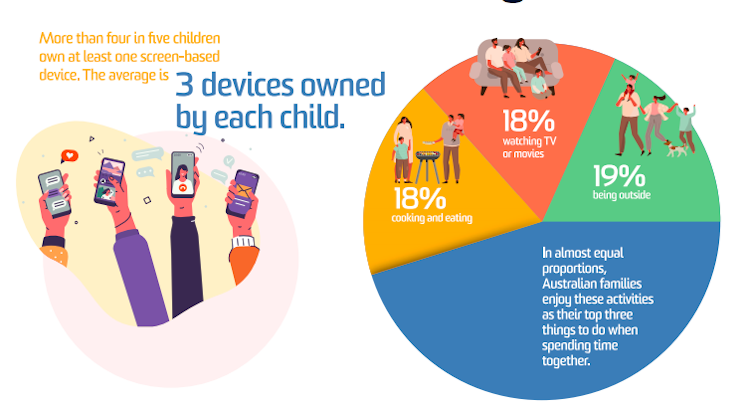
Around 72% of parents said they recognise their own digital habits influence those of their children.
Parents often have different views about their children’s use of digital devices. 65% of parents said they find themselves disagreeing with their partner about how best to set limits and regulate their children’s use of technology.
Read more: Banning mobile phones in schools can improve students' academic performance. This is how we know
This Is What We All Can Do
With physical distancing affecting our social interactions, time spent on watching TV and using other digital devices has significantly increased. For example, the Royal Children’s Hospital’s National Child Health Poll, found half of Australian children had spent more time on digital screens for entertainment in June 2020 compared to the same period before the COVID-19 pandemic. And 42% of children spent less time being physically active.
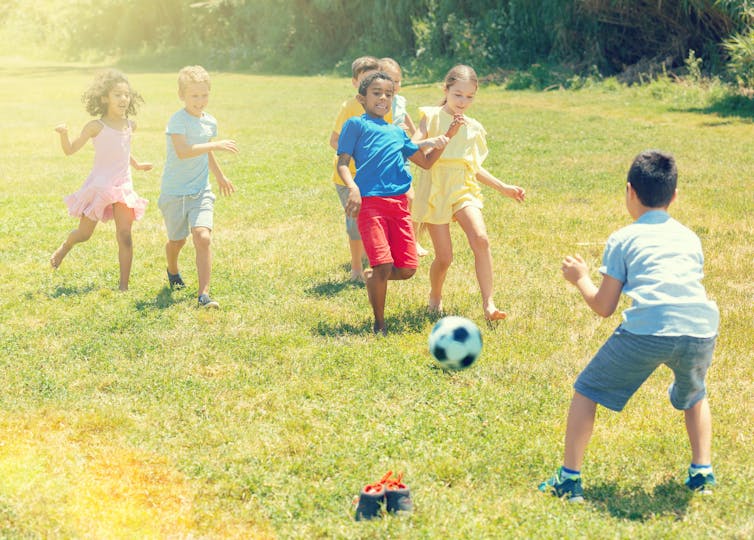
This is not a simple challenge to solve. Certainly, one-size-fits-all solutions like turning off the home wi-fi or hiding digital devices from children rarely work.
But there are some small steps all families can try. The key is that we all must take those steps together.
Take an honest look at current digital habits and screen time in your family. Agree on some concrete actions that would limit the time each family member spends with their digital device
have at least two hours without digital screens before going to bed. Keep all smartphones and other mobile devices away from bedrooms
focus on overall digital wellness by finding a healthy balance between time on digital gadgets and social time with family. Have digital-free weekends and holidays whenever possible.
Most parents included in our study felt they needed help to find healthier ways to live with digital media and technologies with their children. Close collaboration with schools can be a significant help in promoting a healthy relationship with technology.![]()
Pasi Sahlberg, Professor of Education Policy, UNSW and Amy Graham, Postdoctoral Research Fellow, UNSW
This article is republished from The Conversation under a Creative Commons license. Read the original article.
Mammals' brains: new research shows bigger doesn't always mean smarter

If a friend boasts of having a “big-brained” dog, your reaction is probably not to ask “relative to what?”. You would simply assume your friend thinks their dog is pretty smart. But are we always right to equate big brains with greater intelligence?
In a study published today in Science Advances, we and our colleagues describe how the relationship between large brains and “intelligence” in mammalian evolution isn’t as straightforward as you might assume.
A key problem is that, in evolutionary terms, a “large brain” doesn’t just refer to the absolute size of the brain. Rather, we refer to mammals as big-brained when their brain volume is large relative to their body mass.
There are many examples of intelligent animals that are also large-brained for their size. Humans are a particularly extreme case; our brains are roughly seven times larger than expected for an animal of our size. Dogs are also famously large-brained and smart, as are whales, dolphins and elephants.
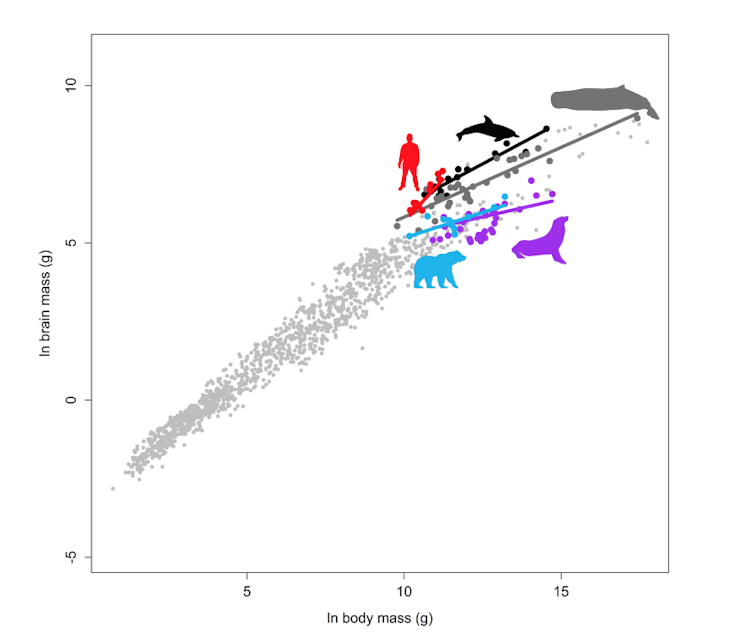
This big-equals-smart equivalence has also been applied in research on mammalian brain size evolution, under the assumption that relatively large mammalian brains evolve in situations where natural selection favours greater intelligence. But what if it’s not brain size that became larger, but body size that became smaller?
To investigate this question, we assembled the largest data set of brain and body masses of mammals from the existing literature. In total, we compiled size data for 1,400 mammal species, including 107 fossils.
We then assembled an evolutionary tree for these species. This allowed us to ask how brain and body size have related to each other throughout the evolution of mammals, starting from before the extinction of dinosaurs.
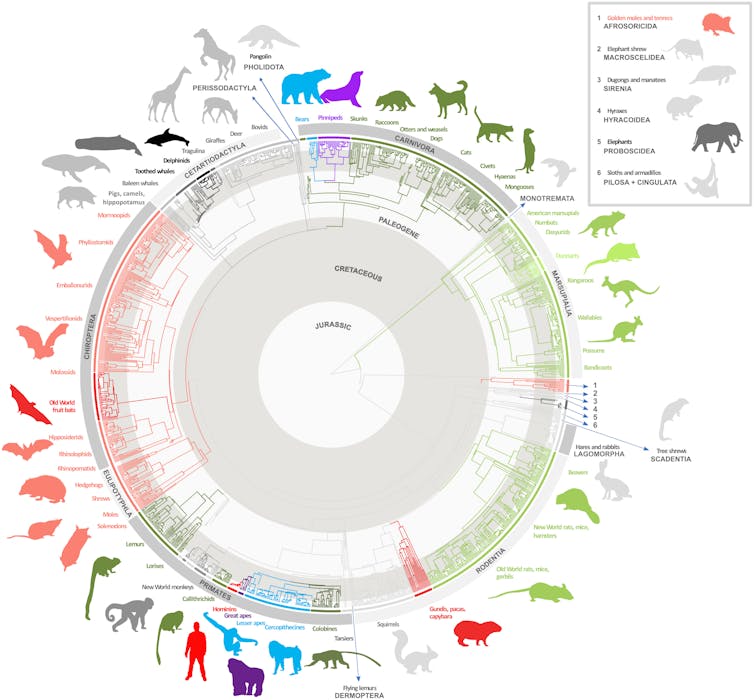
Our analysis revealed a mixed bag of evolutionary trajectories in brain and body sizes. For example, elephants are large, large-brained, and also known to be very intelligent. We saw that this combination arose through the elephants undergoing an even greater increase in brain size than expected for their large body size.
In contrast, the evolutionary lineages for humans and dolphins – both among the largest-brained mammals on Earth - were particularly unique in having larger brains but smaller bodies compared with their close relatives (chimps and gorillas for humans; other toothed whales for dolphins). This unusual combination makes their brains spectacularly large among mammals.
Read more: Curious Kids: which is smarter – a blue whale or an orca?
Strikingly, some mammals that are known to be very intelligent underwent stronger natural selection on body size than on brain size. The California sea lion, for example, famous for its circus-trick smarts, has an unusually small brain relative to its body mass. This is because when the evolutionary ancestors of seals and sea lions began living in water, evolution favoured massive increases in body size — perhaps to conserve body heat, to ward off predators such as sharks, or more generally because gravity is less of an impediment to large body size in water than in air.
This means California sea lions’ relative brain size is much smaller than expected, given their intelligence. So how are they so smart? One possible explanation is that, despite their relatively smaller brain size compared with their close relatives, California sea lions have up to four times more volume dedicated to brain areas that support intelligent behaviour, such as learning complicated tricks.
This seems to make them much smarter than other mammals with comparable brain sizes, such as bears, and shows why sea lions can learn skills that are not in their innate repertoire of behaviours, such as making vocalisations on command.
Evolutionary Upheavals
Our analysis also revealed that cataclysmic events in evolutionary history left their hallmarks in mammals’ brains. For example, there was an acceleration in increases in brain size relative to body mass after the extinction of the dinosaurs 66 million years ago. We think this may be due to the fact many mammals found new habitats to live in that were previously occupied by dinosaurs, often requiring new adaptations in either brain or body size.
Another intriguing pattern is a substantial rearrangement of the relationship between brain and body sizes between 30 million and 23 million years ago, when Earth cooled rapidly and some big evolutionary changes (such as the evolution of seals and sea lions) happened.
Some of these changes left legacies that still endure today. They have resulted in some of the biggest (elephants and whales) and smallest (bats and shrews) mammal brains on Earth.
Read more: Brain versus brawn: the evolution of humans and other animals
Given that the evolution of brain size and intelligence is even more complex than we realised, how do we go about trying to understand it more fully? We definitely need to consider the evolutionary background of present-day mammals. However, it is also important to understand how the various parts of the brain evolve relative to one another.
For example, humans and dolphins not only have large brains overall, but also an astoundingly large neocortex, which is the powerhouse of mammal intelligence.
In the meantime, next time your friend boasts about their big-brained dog, remind them size isn’t everything.![]()
Vera Weisbecker, Associate Professor, Flinders University and Jeroen Smaers, Associate professor, Stony Brook University (The State University of New York)
This article is republished from The Conversation under a Creative Commons license. Read the original article.
We're all ingesting microplastics at home, and these might be toxic for our health. Here are some tips to reduce your risk

Australians are eating and inhaling significant numbers of tiny plastics at home, our new research shows.
These “microplastics”, which are derived from petrochemicals extracted from oil and gas products, are settling in dust around the house.
Some of these particles are toxic to humans — they can carry carcinogenic or mutagenic chemicals, meaning they potentially cause cancer and/or damage our DNA.
We still don’t know the true impact of these microplastics on human health. But the good news is, having hard floors, using more natural fibres in clothing, furnishings and homewares, along with vacuuming at least weekly can reduce your exposure.
What Are Microplastics?
Microplastics are plastic particles less than five millimetres across. They come from a range of household and everyday items such as the clothes we wear, home furnishings, and food and beverage packaging.
We know microplastics are pervasive outdoors, reaching remote and inaccessible locations such as the Arctic, the Mariana Trench (the world’s deepest ocean trench), and the Italian Alps.
Our study demonstrates it’s an inescapable reality that we’re living in a sea of microplastics — they’re in our food and drinks, our oceans, and our homes.
Read more: We estimate up to 14 million tonnes of microplastics lie on the seafloor. It's worse than we thought
What We Did And What We Found
While research has focused mainly on microplastics in the natural environment, a handful of studies have looked at how much we’re exposed to indoors.
People spend up to 90% of their time indoors and therefore the greatest risk of exposure to microplastics is in the home.
Our study is the first to examine how much microplastic we’re exposed to in Australian homes. We analysed dust deposited from indoor air in 32 homes across Sydney over a one-month period in 2019.
We asked members of the public to collect dust in specially prepared glass dishes, which we then analysed.

We found 39% of the deposited dust particles were microplastics; 42% were natural fibres such as cotton, hair and wool; and 18% were transformed natural-based fibres such as viscose and cellophane. The remaining 1% were film and fragments consisting of various materials.
Between 22 and 6,169 microfibres were deposited as dust per square metre, each day.
Homes with carpet as the main floor covering had nearly double the number of petrochemical-based fibres (including polyethylene, polyamide and polyacrylic) than homes without carpeted floors.
Conversely, polyvinyl fibres (synthetic fibres made of vinyl chloride) were two times more prevalent in homes without carpet. This is because the coating applied to hard flooring degrades over time, producing polyvinyl fibres in house dust.
Microplastics Can Be Toxic
Microplastics can carry a range of contaminants such as trace metals and some potentially harmful organic chemicals.
These chemicals can leach from the plastic surface once in the body, increasing the potential for toxic effects. Microplastics can have carcinogenic properties, meaning they potentially cause cancer. They can also be mutagenic, meaning they can damage DNA.
Read more: Why ocean pollution is a clear danger to human health
However, even though some of the microplastics measured in our study are composed of potentially carcinogenic and/or mutagenic compounds, the actual risk to human health is unclear.
Given the pervasiveness of microplastics not only in homes but in food and beverages, the crucial next step in this research area is to establish what, if any, are safe levels of exposure.
Read more: You're eating microplastics in ways you don't even realise
How Much Are We Exposed To? And Can This Be Minimised?
Roughly a quarter of all of the fibres we recorded were less than 250 micrometres in size, meaning they can be inhaled. This means we can be internally exposed to these microplastics and any contaminants attached to them.
Using human exposure models, we calculated that inhalation and ingestion rates were greatest in children under six years old. This is due to their lower relative body weight, smaller size, and higher breathing rate than adults. What’s more, young children typically have more contact with the floor, and tend to put their hands in their mouths more often than adults.
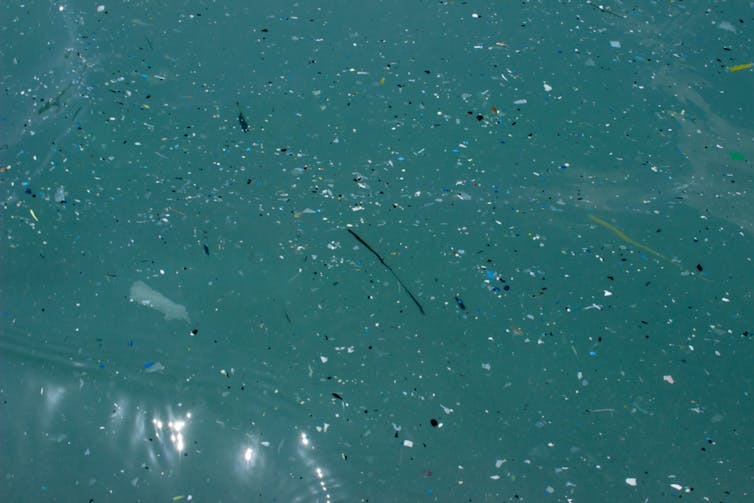
Children under six inhale around three times more microplastics than the average — 18,000 fibres, or 0.3 milligrams per kilogram of body weight per year. They would also ingest on average 6.1 milligrams of microplastics in dust per kg of body weight per year.
For a five-year-old, this would be equivalent to eating a garden pea’s worth of microplastics over the course of a year. But for many of these plastics there is no established safe level of exposure.
Our study indicated there are effective ways to minimise exposure.
First is the choice of flooring, with hard surfaces, including polished wood floors, likely to have fewer microplastics than carpeted floors.
Also, how often you clean makes a difference. Vacuuming floors at least weekly was associated with less microplastics in dust than those that were less frequently cleaned. So get cleaning!![]()
Mark Patrick Taylor, Professor of Environmental Science and Human Health, Macquarie University; Neda Sharifi Soltani, Academic Casual, Macquarie University, and Scott P. Wilson, , Macquarie University
This article is republished from The Conversation under a Creative Commons license. Read the original article.
Our history up in flames? Why the crisis at the National Archives must be urgently addressed

Imagine you are in a large building near Parliament House in Canberra filled with irreplaceable objects. Not jewels, medals or paintings, but a collection of letters, tapes and documents of Australian life.
The collection contains letters written to and from prime ministers, and recordings of their speeches. It has historic episodes of the ABC television programs Four Corners and Countdown. Audio recordings of the Royal Commission into Aboriginal Deaths in Custody. Your grandmother’s migration records. Your uncle’s military service records. Covert ASIO surveillance footage of anti-Vietnam war demonstrations. Letters from women living under the shadow of domestic violence, written to the Royal Commission on Human Relationships.
These are just some of the things to be found in the National Archives of Australia. Its role is to collect, manage and preserve records generated by the Australian government. This sounds dull, but it is anything but.

It is not merely a “politician’s archive”: while the NAA is famous for its annual release of cabinet records on January 1 each year, some of the collection’s richest records are those that offer insights into the lives of ordinary Australians. Whether they were migrating to Australia, registering for military service, or writing to the prime minister to demand that he fund women’s refuges, ordinary citizens generated paper trails that have been preserved in the NAA’s collections. As a resource for understanding the ways that government works, and the ways that citizens interacted with it, the NAA is a peerless resource. The material it houses belongs to all of us.
Now imagine burning this building to the ground, destroying almost everything inside. Last week, historians around the world watched in horror as the Library at the University of Cape Town burned down, taking with it thousands of irreplaceable historical records. Thanks to years of underfunding, Australia is on track to see a similar, though less spectacular, destruction of historical records, unless the federal government makes an urgent injection of funds.
Read more: Cabinet papers 1998-99: how the GST became unstoppable
Over the past few years, both Labor and Liberal governments have repeatedly cut funding to our national cultural institutions, including the National Archives. All commonwealth agencies have been subject to so-called “efficiency dividends” since 1987. This means that each year they receive a reduction in funding.
While this is intended to drive savings, in effect, according to a 2019 parliamentary inquiry, it has had a “significant and compounding effect” on cultural institutions over the last decade. This was made even worse in 2015-16, when the Turnbull government imposed an additional 3% “efficiency target” on national cultural institutions.
This means institutions like the National Archives have been forced to shed expert staff and reduce services to users. In 2013, the archives had 429 staff around Australia but by 2019, this had shrunk to just 308. This has made it more difficult for people to access material at the archives, as opening hours have been reduced. Users report long delays when they request materials; obtaining digital copies of files can cost you hundreds of dollars. This user-pays system has further restricted access to collections.
Even more urgently, these funding cuts are also taking irreplaceable audio visual collections to the brink of a “digital cliff”: that is, where a combination of material fragility and redundant technology will destroy a huge audio visual archive. Australia’s audio-visual collections will hurtle over this digital cliff by 2025 if no action is taken.
Let’s think for a moment about what this means.
Australia has experienced a century of profound and rapid transformation, all of it captured by the mass media. Television, film and audio show us how people in the past moved, sounded and spoke: they offer vivid and compelling evidence of life in the past that is impossible to obtain any way.
This kind of footage is the mainstay of documentaries. Archival footage can light a fire of curiosity about our past, especially in those who might never pick up a history book. It is crucial especially for engaging young people in history. Brazen Hussies, the recent documentary about the history of women’s liberation, was so successful because of its use of vivid, rarely-seen archival footage, much of it held in the National Archives.
Filmmakers would struggle to create lively historical documentaries if we allow the archival film held by the National Archives to be destroyed. It would be disastrous for our historical understanding.
What is so astonishing is that the amount of money required to pull us back from the digital cliff is relatively small. The government has committed $500m to an expansion of the Australian War Memorial : the Tune Review of the National Archives, released in March this year, recommended the government fund a seven year program to urgently digitise at-risk materials. The cost? Just $67.7 million.
The National Archives is a crucial democratic institution. It plays an important role in holding the state to account, encouraging broad participation in civic life by facilitating access to records generated by the Australian government. This gives it enormous power to control – and limit – access to government records.
Yet it has not always exercised this power wisely.
Given the enormous financial pressures on the National Archives, its decision to fight Professor Jenny Hocking’s bid to access the so-called “Palace Letters”, a legal dispute that cost the archives more than $1 million, was a deeply misguided use of precious funds.
Read more: Jenny Hocking: why my battle for access to the 'Palace letters' should matter to all Australians
Similarly, many historians have criticised the archives’ overly cautious approach to clearing records for access, which has led to huge backlogs of unprocessed requests. Its practice of sending records back to the department that originally created them means documents can languish, unchecked, for months or even years.

As the Australian Historical Association noted in its submission to the Tune review,
A process which restricts or even refuses access to government documents without adequate justification does not reflect an open and free democratic process.
The National Archives has much work to do to improve access to the records it holds. But it is also clear it has been denied essential funding for many years, and this has taken a toll.
The archives contains irreplaceable records that are important to every Australian. It is the government’s role to fund our national cultural institutions adequately so they can preserve and maintain this material: not just for citizens today, but for the citizens of the future.![]()
Michelle Arrow, Professor of History, Macquarie University
This article is republished from The Conversation under a Creative Commons license. Read the original article.
Australian Children More Distracted By Digital Devices In The Home Parents Say
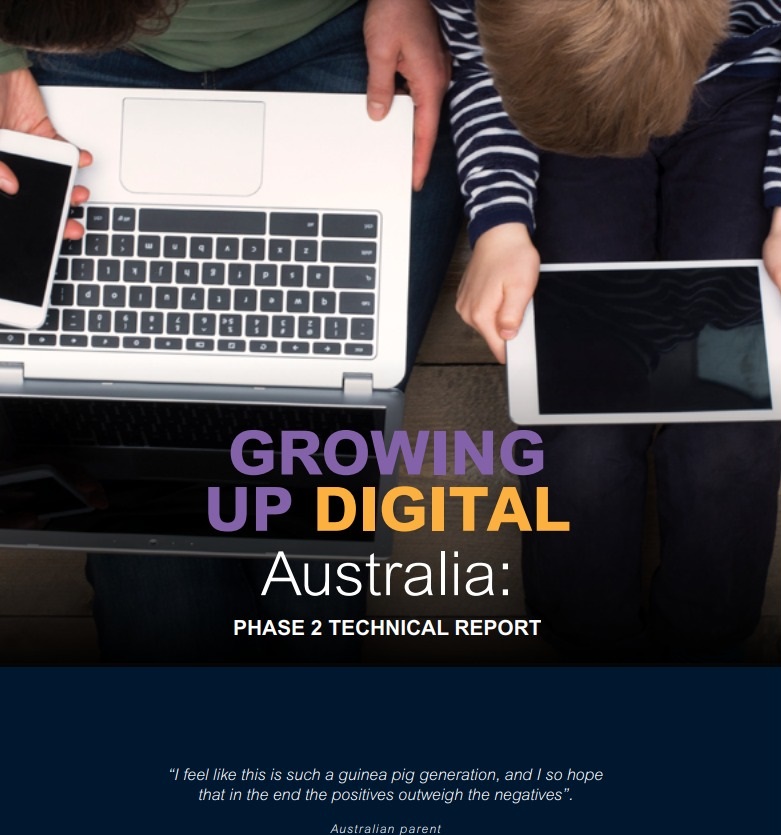 The new research report released today reveals digital media and technologies as a great distraction in Australian family life. More than nine out of ten parents think digital devices negatively distract their own lives, and 83% think their children are also negatively distracted by digital gadgets.
The new research report released today reveals digital media and technologies as a great distraction in Australian family life. More than nine out of ten parents think digital devices negatively distract their own lives, and 83% think their children are also negatively distracted by digital gadgets.- More than four in five children own at least one screen-based device that belongs to them, and children own, on average, three digital devices at home. Personal ownership of gadgets starts as young as four years old.
- Only 46% of parents felt that their child spends a day without digital technology.
- 73% of parents and grandparents think it is harder to control their child’s digital habits since getting their own screen-based device.
- 65% of parents agreed that ‘negotiating digital technologies use causes conflicts in our home’.
- 83% of parents, carers and grandparents felt that their child was negatively distracted by digital technologies.
- Half of parents said that they would welcome more support from their child’s school to help them and their child to manage digital media and technologies use at home.
Australian Report Says Not Too Late To Avoid A 3°C Warmer World
- scale up the development and implementation of next-generation zero greenhouse gas technologies.
- systematically explore how our food production and supply systems should prepare for the challenges of climate change under growing extremes including the implications for carbon sequestration.
- improve our understanding of climate impacts, including tipping points, as well as the compounding effects of multiple stressors at global warming of 2°C or more so that we can develop effective adaptation responses.
Australian Study First To Explore Combined Impacts Of Fishing And Ocean Warming On Fish Populations
Espresso, Latte Or Decaf? Genetic Code Drives Your Desire For Coffee
 Whether you hanker for a hard hit of caffeine or favour the frothiness of a milky cappuccino, your regular coffee order could be telling you more about your cardio health than you think.
Whether you hanker for a hard hit of caffeine or favour the frothiness of a milky cappuccino, your regular coffee order could be telling you more about your cardio health than you think.Future Drones Likely To Resemble 300-Million-Year-Old Flying Machine
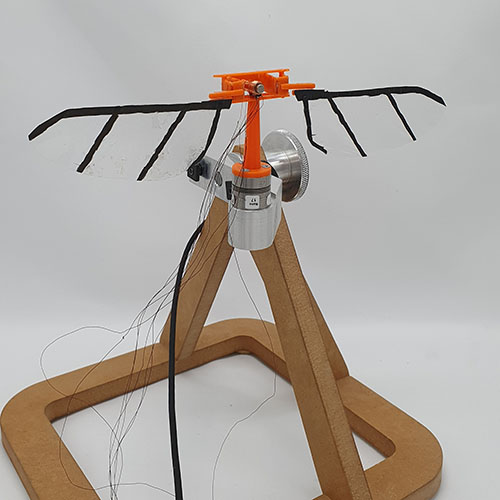
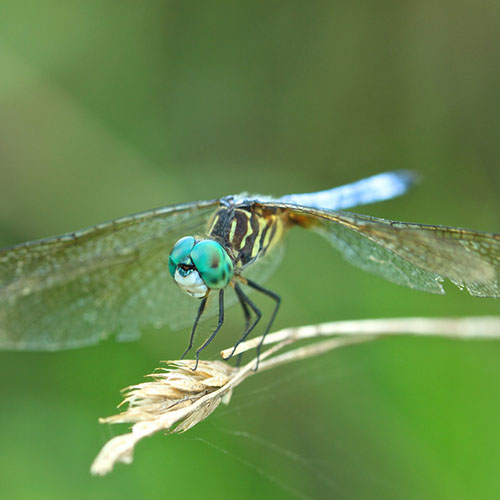
Australian Airports Could Generate Enough Solar Energy To Power A City
Genetic Effects Of Chernobyl Radiation

Disclaimer: These articles are not intended to provide medical advice, diagnosis or treatment. Views expressed here do not necessarily reflect those of Pittwater Online News or its staff.